|
Art friendships are the secret elixir of an artist's life, if you ask me. They are way of getting perspective and remembering to stop and consider milestones, to be kind to oneself and to see things from another perspective. Sometimes, I meet with artists in a more formal way. I find this Studio Visit practice to be more of an east coast norm than a mid west norm. We'll sometimes use a specific structure to meet and work together over the phone, over zoom or in person. Above is my a picnic visit with dear friend and amazing photographer Lisa Abitbol. We met when she bought a painting of mine in about 1997 and stayed mulitple hours (like six?) at my studio when she came to pick it up. Here is a the kind of formula that I've used with others that help this kind of meeting work well for me and those I meet with (Ceramic artist Leiligh Towfigh calls these "artner" meetings!). I have also created this kind of structure as a coach for artist groups while working with the Arts & Business Council in Boston. Time boundaries - these allow me to sink into listening better, or sharing, knowing we've got a shared understanding and plan. 1. Check in about time at the beginning so you know what you've got to work with. 2. Do a 15 minute check in each (depending on the time you've got), leaving the last 5 minutes for feedback from the other. It is really helpful to have one of you keep time, and not to be squeamish about just stating when time is up. Otherwise, the vagueness of time creates a little energy leak that's unnecessary and counter to really diving in. In checking in, I like to answer and suggest to the other person some combo of these questions as prompts: "What am I working on? What's going well? What are my challenges? What would be great to walk away with from this meeting today?" Sometimes we choose to respond to these or similar questions by writing on these questions first, and then we each check in for 5 - 10 minutes and give feedback. Usually, there's an obvious interest in the talking or the writing, depending on how the day is going. 3. Once that's done, we look into what kind of time is left, and we might do a second round with more focus on whichever is most either in need of support or perspective, or we work quietly in parallel, leaving 5-10 minutes at the end to check back in on where we landed. (Above is an image of artist and friend Paloma Nunez Regueiro visiting me with some of her treasures in my studio last fall). 4. If it's a regular meeting, we might want to mention steps we intend to take in that wrap up, and then we may start with how that went in the check-in next time. It's also very important that you be clear in the kind of feedback you are looking for, and what you are not looking for. Some people give advice or critical feedback on a project you have completed, and that can feel yucky when you didn't ask for it. If you're not sure, ask: What kind of feedback would you like?, or what questions do you have for me? Try to avoid seeking approval for your work or just giving empty strokes of praise - so the exchange can have some meaning and depth. There are also many critique type processes that you can also apply with a little internet sleuthing to get pointers on this if you'd like them. Some of my regular artner friendships have been with Sue Murad (film, performance, artist books below), Andi Sutton (interactive and public projects MN), Valerie Isaacs (painting), poet Carrolle Morini (poet and librarian), and Erika Blumenfeld (literal artist to the stars). May there be many more to come!
0 Comments
The book Goodnight Moon is strangely a bit of a lynchpin in many of my art projects. Goodnight Moon was a book I grew up reading when I was very young. I'm sure many of you are familiar with it. It features a bunny rabbit and his mom or grandma in a quiet house at the close of the day. It's dark outside and the mama bunny is knitting while the baby bunny lays in bed. The narrator then does a kind of inventory of everything in the room as they say goodnight to it. "Goodnight mouse, goodnight house (there's a doll house), good night brush, good night mush" (there's a bowl of mush). We read the book not only saying goodnight to all of the objects in the room, but also, you get to find and pair each object because of how it's illustrated with little side images of each object. You look for the mouse in the scene, seeing it on the side, as well as the house, the brush, the mush, and so on. I recall this as a very satisfying process, very engrossing and rewarding. I loved this pairing process, and I want to point out to you that in my artwork, I do this all the time, in part I now realize, because I found it such a joy when I was a kid. It's basically pattern recognition, but it's something we're good at as humans, and find pleasurable because it's how we're wired: Look for all the berries on the bush, or the gazelle on the ridge, or the bug in the soup - to keep us safe and fed and alive. As you forage for a plant or a mushroom, or that perfect black skirt, see your lizard brain at work! This same simple and gratifying process happens in at least five of my art projects: Stand In, where I have a legend repeating the objects in the sculpture: You Are Legend, where similarly a legend repeats objects in the room you are standing in. This project hasd happened as part of the Reflecting on the Sacred Exhibit at Babson College, and recently, this August I developed it further while in Vermont, on Turd Hill with an excellent group of artists. My prayer books where an image is large on the left and small on the right. The image below is a page from the newest book, written just before the pandemic, which has new prayers and new images throughout, and was published under the original name Contemporary Prayers to Whatever Works by Simon & Schuster's Tiller Press in 2021. So two different books, same name, printed seven years apart! In Offering Shelf, an asterix is in the object and on the label. The image below doesn't show that, but the label reads ' Every item on this pile is a thought, story, emotion I let go. ' and the pile is detritus and overflow of materials and scraps from my studio (as are the images from the second book Help me [ ], do the thing. (Offering shelf has been shown three times, at Millersville University, Lancaster PA in a solo show I had there in 2010, at 808 Gallery at BostonUniversity in a group show I was in prior to that, and in another form at 555 Gallery in the 2014 solo show there called Placeholders). In Attendant there's a picture of the block in the label, and also in the image. This is Kim Cowperthwaite, at his desk at the Mass Institute of Technology, participating in the project while working. The photograph below is by Lisa Abitbol. Attendant has happened in many places and with many participants including Currier Museum in NH, MIT, the Urbano Project MA, Millersville University, and on Peddock's Island in the Boston Harbor :). Again, it's just like in Goodnight Moon. It's amazing to me that a simple impression from childhood creates an indelible pattern of its own across several decades of my conceptual artwork. I asked you this in the Small Spark post a few months ago, and I'm still curious: Was there a specific childhood moment or insight that you remember affects what you do as an adult today? I mean of course, and frequently from pain. But any you feel comfortable sharing in comments below, please do!
PS! There are a few calendars left! I will be sharing them locally at the TINY EXPO in early December, so get yours now if you are far away. Remember: shipping is free from my shop! See the whole thing here and n Get your copies here! It will be sent to you promptly. Before I share about sparkiness, I want to extend an invitation to the WestSideArt Hop this weekend. Please join us if you are in the area (of Ann Arbor MI). Details here. Lots of new things to see!
Was there a small creative spark in your early years that became a vivid theme in the work that you do today? I recently came across this little paper remnant from when I was a kid because it relates a lot to my artwork. I don't remember the specifics, but what I vaguely recall is that this paper was from a listening and noticing exercise I was invited to do for a class in middle school. This is the piece of paper I wrote on. It had been folded into fours. It's something I keep on my bulletin board to remind me of how impressionable we are as kids and how simple things like this exercise can shape a life. List making in and of itself has come into my work many times, most notably in Empty Full, in which I inventoried every single object I own as both a list, and as a single calculated volume of space, which then was shared as a hollow cylinder in the same volume, with the list of objects on the floor of the structure. In Yardsale, while I was holding an object with all of the usual stuff for sale, I asked each customer to cross off of a list an item of their choice for every object they bought. The list was of intangible things I was, I felt, ready to let go of at that time in my life. The list has things like: "Taking the bigger piece of pie" and "laughing when it's not funny". Visual Traces of Groups of Work. I and five volunteers observed what was happening in the gallery: minute repeating events that are a part of a group at work, that became a list as part of the work, and then got translated into different types of adhesive marks on the walls and floor of the gallery, exhibited along with the list. Lists also feature heavily in my third book the Elements: a love letter to all thing everywhere. Here, the objects and areas in which each element is found, are listed for all 118 chemical elements, as well as their behaviors, qualities and uses. All of my books except the very first have Indexes, another kind of list and another way to explore and enter the content of the books. Spot Count asked others to list their noticings in open public spaces like a weedy lot or a park, much like I was asked to do in school long ago, though they moved through the space like you would for a bird count, or for a forensic search, but in my project, leaving colorful marker wherever they stood and observed. I'm also excited to share that this same theme is coming forth in a new book project that will be ready to fully to share in just a few months. It's a book called Field Guide to Ambiguity, and is about all of the situations in which ambiguity is present, as well as some of the strategies we use to deal with it. It is essentially a list of such ambiguous situations, paired with a new artwork, reflections and variations on each situation, as well as beautiful design by my collaborator Patrick Barber in Detroit. Patrick has contributed much to the building of this book, the structure and the editing process as a book designer and a designer specifically of Field Guides as luck would have it. I can't wait to share it with you, but for now, let's return to the piece of paper that inspired this post! Do you have something from your childhood that made a huge impact on your livelihood, artwork or other creative work in a significant way? What small thing was introduced to you that became a seed, that then grew into something huge?
For you today, I have a brief talk I gave back in the fall of 2018 called 'Art Among the Elements.' at a local night club as a part of Nerd Nite - a story corp style gathering hosted by the illustrious Ann Arbor District Library. I talked for 22 minutes about the third book which was in process at the time: The Elements: a love letter to all things everywhere.
I share in this talk about why I make books, how I came to make this one on such a different subject than the two prior books (on prayer), and the distilled learnings and takeaways from the process to date.
I am sharing it with you here. It’s not the live talk, so you can’t hear the wild and untameable audience participation, but the sound quality is pretty good and there are some pretty slides. A note too that I have a few scientific facts *almost* right in this talk, corrected when I actually did complete and publish the book in 2019.* Please enjoy and thank you for helping make this book a reality! All I had at the time of the talk was a prototype with a slightly different name. I was still working out layout and layering of the meaning and content of the book. Looking back, it’s amazing to see how many things needed tremendous time and patience to come into focus. I didn’t learn how to give them either until I was in the very end stages. In essence, this book taught me to slow the F down, care for my body, and to tolerate uncertainty better than I had ever been able to before. To see the book in its finished form, you can visit its official web page, or find it for sale in digital or physical form at my shop. You will also find a grid poster, a set of prints and a set of postcards, as well as a curriculum to walk children and adults through the book scavenger-hunt and interdisciplinary-style, which is my teaching and making way.
Speaking of uncertainty, that’s a topic I am currently exploring in another decade-long book project that is underway in earnest today! I will share more about that soon.
*The primary factoid to correct is that Hydrogren formed not immediately after the big bang, but as things cooled down in the time that followed when atoms could in fact pull together at all. Share with me your thoughts! What is sparked in the electric being that you are by this topic and this story? 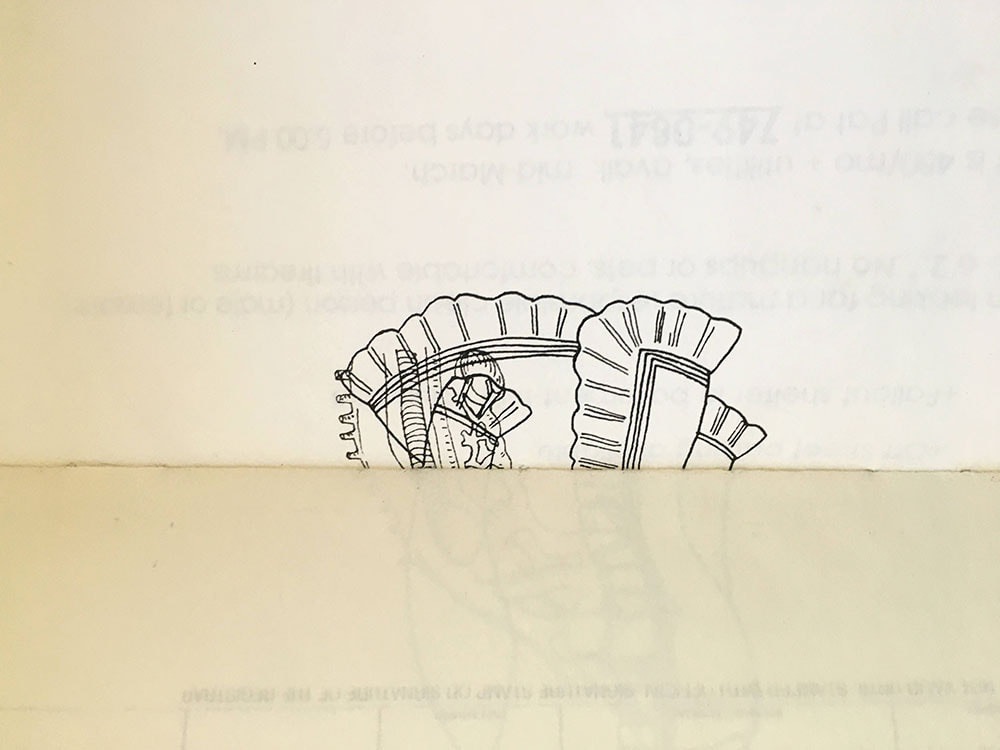 This is an image of the seam in a handmade book of mine, that included a castoff process xerox from artist Juliann Cydylo who was my studio mate at the time. This was a chance layout that I particularly enjoy. It has a lot of white space around it, and some mystery, much like the beginnings and endings of a year, which can also feel kind of like an upside-down time. Below is a bit of a year in review for us both. Before I share how things unfolded to me, I'd like to invite you to pull out a journal and pen, make a cup of tea and settle in to reflect on your own year. I have included a list of simple reflection prompts at the end of this post, and I have spent many a new year's day with friends or somewhere in the week before Jan 1, considering what's gone on in our lives for the past 365 days or so.
What did you lose in 2021? What came into your life in 2021? What is different from a year ago? What are you loving in your life right now? What is not working right now, and what does that tell you about what might work better for you? Three + favorite moments from your year: Three things you can place on the altar and release from 2021. What surprises you most about this past year of your life? What is a constant in your life through this past year and beyond? What qualities of experience do you want to invite in moving forward? Please use the comments below to suggest other prompts as you are inspired to share them, and any insights into your year you'd like to share. I started to write my year in review in a period of great striving. Since then, the duracell bunny in me has kind of run out of batteries for the season. There was a little sadness and concern about this at first, but then I started to feel the telltale signs of freedom and inspiration that come with any form of surrender. I could just tell you how great it all was, and wish for you that your life was equally as great, with a wink and a smile. But I will not do that. Here's how my year went, as I reflect on it now. A book came out in March. It was confusing because it's the same title as my first book, but its a different book. It's a lovely little book, which you will really enjoy if you like my two other prayer books. I spent about six months contorting myself into pretzels to be ready for the launch, and then just felt a little lost and confused about why and what for. My art studio is a complete bright spot, and now too a warm spot, as I finally figured out how to work the wood stove. I have the right wood and the right fire building technique. There is less soot settling on my drawings, and when I leave at night, I do a little bow because I can't believe that this space is mine to use every day. I was very intent on doing a whole bunch of art book fairs and pop ups, really laser focused on this. And somehow with all of my striving, I have ended up participating in only one of the seven I had wanted to participate in, which comes up in early December. It's a wonderful little day-long pop up event and now I am happy that this is what I'm doing. I set up a few talks online with bookstores and libraries, and saw how hard people work to facilitate and share these - staying at work into the dark hours, dealing with zoom, following up. Everybody works so hard. It's also very cool to see how these things always have the flavor of the group that ends up attending, whether there are fifty of us, or three. I did a deep dive to figure out how to 'connect with my audience' and 'get my stuff into circulation' more, and have concluded that what is involved in this is a huge huge amount of lifelong, ongoing work that does not spark joy in my heart. I put all of it down, surrender that project, and await with curiosity to see what happens next. I have begun to archive the work of Janet Gallup, a printmaker and the deceased wife of our friend Al Gallup here in Ann Arbor, who has all of it in a shed he bought for it, after he and his kids dispersed as much of it as possible. I don't know exactly what is compelling me here, but I am very interested in what happens to a body of work when the artist's body is gone, and Janet's is here to attend to - and it's a beautiful collection. I will share more on this soon. I have made a few death books and will make three more soon, and made formalized this project in 2021. So in this year where I feel more alive than I have ever felt, there is a lot of a theme of death, surrender and stopping. These are not new themes, but they are newly applied in ways that surprise and interest me, and lead to freer experiences of the life that's here to be lived. I have absolutely no idea what is to come in 2022, but I wish you a balance to whatever has felt like too much or too little, some quiet time in the wee hours of January, and a creative spark of joy in your heart. To counter the Dark Side of December post, here is a lighter angle on the holiday season we are in. First off, Happy Winter solstice! As of the 21st, we have officially lived through the darkest, shortest day of the year. Go us! Go planet earth and all of the sun worshipping creatures alive today!
There is also a lot of twinkly light and color at the holiday. Things that smell nice, and usually a little break. Sometimes one is completely alone. Sometimes there is no family. Sometimes the invitation to share the holiday was declined, devastatingly. But still, opportunities are there for listening in the silence, in the dark, in the big hush and pause of the whole thing. For a while in my life, my holiday was piggybacking on someone else's holiday. For a while it was lots and lots of pie making, and then pie giving away. There were the drunken years, living to join friends at the bar after the family meal, and the breakup at holiday time, which is a brutal no fun experience. In the end, there is a kind of Christ light coming into the world that I sense at this time of year. Interpret that however you like, in the lense of whatever your beliefs. Some seed beginning to germinate that really hasn't broken the frozen ground. The miracle of all of the animals that somehow survive the cold and bare outside for the whole year. A chickadee for example: how does a ping pong ball size bird manage to stay alive, let alone fly and sing, in the northern part of the US, all winter long? Also, there are the little twinkles and the tiny bells, magicking out the dark. How do you personally, sense the quiet light of this time of year? What brings it clearest into focus for you? I find that with every year, what I love gets easier to identify and then to bring forward as a way of relating to and being in this time. What is it for you? Let's pool ideas. I have noticed that when meditation comes up in conversation, I often hear the phrase 'I should...' followed by some description of how someone is failing to live up to some ideal way of doing it. After meditating in a group of people where there's some kind of check-in afterward, I commonly hear descriptions of either a difficult/disappointing experience, or a lovely, special state type experience. When you're learning to do something like say, skateboard, and you go out there and try your hand at it, and come back either having wiped out, dusting yourself off, or successfully land without wiping out - what a rush! A positive, confidence building experience. I always wanted to be that guy having the rush, not the one who became increasingly aware of the intense kink in her shoulder over the course of the sit.
Meditation however, is not a performance. It's worth exploring this because otherwise, it's another thing to make us miserable. Some kinds probably are performative. But presence isn't something that you do, and this term meditation is simply about presence when all is said and done, or "This" : whatever's happening right now. Instead, it's what is never not there. You aren't doing being presence, or doing being. Like the sky, or say, noticing you have socks on, the presence of socks is not about you, they're just, well, on your feet. The sky is never not there, whatever your level of interest in, focus on, or idea about the sky may be. The other day I heard great table metaphor that may illustrate this. There's a table covered with books. Lots of books. That's you - the table - with all kinds of interesting books on it. The books are the identifiers we have - the things that when we're gone and everyone who knew us is also gone, go as well, because they are a shared thought. This includes your history, your plans, your opinions, your life story, your nationality, your preferences, how you vote, your personality, your style, your body, your chronic pains, your psychology, your turns of phrase, your reflection in the mirror, what you love and don't love about your body, your closest kin, your habits, your address, your drivers license number, your social security number, your CV and resume, your skill sets, pedigrees, your successes, your failures, your traumas, what you overcome. Your memories, others' memories of you, your reputation, your good deeds, your misdeeds, your credit score, your best moments, your bank account balance, your possessions, what you've made, what you failed to make, finish, accomplish or complete. Also, time, objects and space can go there too but that may be another conversation. When the 'books' are removed, like when you're tidying up in the living room, you find there's a table underneath them. It's always been there. It's never not been there. It's familiar to you, as it's what you have used to access and read these books, and to refer to your 'self' in the form of each of these books, these programs or information packets about yourself. You may put your feet on it or put your dinner plate on the table too. Meditation is just awareness of This, or you could say, awareness of what is the ground of experience. The big attainment is actually just - the table is here, where it's always been. How spiritual! The idea of meditation as a performance is just another book or glossy yoga type magazine on the table, with a picture of yourself perhaps, doing whatever idea of your meditation performance is. It's pretty funny and incredibly amazing how thought co opts even just This - what's happening right now. The flow of one thing after another, a live stream of you. To take the table metaphor a little further, it's not even 'your' table - with a style, with a level of wear, perfectly reflecting all the books that were on it. It turns out that everybody's books are on one table, one gigantic table, again, just a metaphor this table, but it's not actually an object, and nobody owns it, or dusts it, or made it. It's not a thing like a galaxy is a thing, or a pebble. It's just that we are built to see and talk about and interact with objects, so that's as good a metaphor as any: table. This big wide foundation or ground on which all the objects form a fleeting impression of the story of you and your life, is always here, always offering up the next thing, and is in fact, you, and me, and this word, and the sound you're hearing, and the plans for the next hour, and the irritations and concerns, and the gratitudes and questions, and the dog and the cat, the wad of tissue that didn't make it into the trash can lying on the floor, and the tree shimmering out the window. Nothing, no book, no passing object of experience, and the presence underneath, is not you. Here's a suggested way to let this sink in a little further. Cue up a song or two, get a glass of something, maybe a snack. Sit in a chair and look out the window. Five minutes we're talking. Maybe set a timer. Let the flavor of your food and drink mix with the sound of the music or the kids fighting, mix with the sight out the window, the movement, inside/outside blending, and constantly changing, coming and going. OR When you get really annoyed, overheated, or suddenly tired and notice this, plunk yourself down with that - sensations, the litany of thought, sounds, the taste in your mouth, how your body is, the temperature. Nothing needs to change and no one needs to do. Like a piece of cardboard lying on the side of the road, just being.( In this case, an agitated or overheated piece of cardboard.) When you are in conversation with someone, notice what that's like, what the body feels like, the sounds, the gestures, emotions, distractions, how space and arrangement of bodies and body language is. No need to put ideas to anything, just become curious without getting involved in thoughts about it. That to me, is what they call - meditation - or even better - it's you - the one talking, the one listening, the one reading, the one writing, the weather outside, the weather inside, the flavors and the smells, the ungainly and the very compelling. The pull and the push away. There's a real mix in the holidays of light, joy, sad and dark. Have you noticed? Generations of regular people lose loved ones who immigrate, go off to war, simply leave, are taken somehow, or pass away. It makes sense that most if not all family systems are marked by some form of absence or loss in this season. Memories of holiday times past may, by default, carry a major imprint of sad. Have you also noticed how the more cranberry sauce is piled on and the louder the carolling, the more that heavy imprint may be running the show? Sometimes it's me turning up the cheer. Some cope with a complete bah humbug attitude, others by just going off grid for several weeks, and others by going full boar into the traditions. It's maybe a little bit of all of this, mashed together - like one of my christmas cookies here - that makes us our human-suited holiday selves. In my own life I can recount so many wonky holidays - when I couldn't show up though everyone around me seemed able to - when I was the only one getting her act together while everyone else was in revolt - break ups, break downs, silent treatments, arguments in front of the guests, hitting the sugar wall, the overlit box store, the disproportionate gift exchange.
While this may come across as a very wet blanket contemplation, perhaps its a way for to preemptively make room for the small grief cloud that curls in under the door, usually unnoticed and unwelcome. It visits kids without knowing what they're picking up from around them, and all of us who may carry the football of inherited grief in the form of pressure and tradition without knowing what is driving us to do so. I am asking myself, why am I writing such a downer of a post. Reflecting like this may be a way to see the whole thing at work, and thereby to see the wider field of possibility, and the love it expresses. The missing of the ones we love, of simpler times, the things that were but aren't now, or aren't yet. Perhaps its just a tender hearted time of year: a big tender heart in a period of waiting, twinkly lights and humanness. I've been trying to put my finger on something since my return from the Colorado River last week. It was a short trip. Hard even to recall and yet it's left an imprint that moves like a sun spot - always on the periphery of what's going on, but here still, adjusting everything in a way I can't yet place.
While there on the river, one thing presented after the next: floating, climbing, eating, chatting, hauling, organizing, snacking, getting ready for and floating out of the next or last rapid, covering up, cooling down in the water, caring for eyes in the dry hot wind, playing werewolf in the dark with eight people whose names I mastered just as I bid them goodbye. And the whole time trying actually to arrive. We stopped at many bright and sacred oases, hidden waterfalls and water pools, places where ancient Puebloans left the mark of concentric circles or stored their grain way up high. Each of us rested on a warm rock in the shade, watched the glowing walls change as we floated up to, by and past their silence and specific set of magnificent scars. I was rarely alone - normally I am alone more than half of the day. There I sat only a handful of times in solitude. The time I sketched canyon walls in the ninety degree blue white moonlit dark, too bright to sleep in. The times, each of them, when I was easily an early bird, rising before others to stand at river edge, or look out from the privacy of the 'adventure toilet', or to follow the hide and seek of a dawn bird call. The last time was in Deer Creek Canyon, sitting, awed by the height we'd climbed up over the waterfall, to the oasis behind and above it: cottonwood trees, carved pools, the sense of a thin flat plane of water appearing to flow uphill, the surprise of a place you didn't expect, and the overwhelming presence of grief love: when one's home in another has gone beyond one's physical reach, accepting the time had come for them or you to leap the ledge. There and finally in Flagstaff when I shut the door to the hotel bathroom, were the moments I registered being alone, outside of the itinerary, the patter of family, short term plans and passerby, the flowing by of scenery unlike the familiar touchstones of my home address and agenda. The main takeaway: This all slips by. It can't be held. It's vaster than can be comprehended or discovered, it's sometimes floating, sometimes shocking with cold or challenging with a heart-pounding climb. You can't stop it and yet it is saturated with tenderness, an intimacy that you already and ever are, that soft sand suggests and the small circle of a blowing weed traces in it. Just this is yours for just right now. It's taken all day to get into the studio. There are days like this when I feel fiercely protective of my time in here. The funniest thing is that what I do in here looks like so little outwardly. I read a little, I write a little, I drink coffee if I have it, I listen to music. Sometimes I nap. And sometimes it's all activity and insight and inspiration and stepping back and looking or marking and cutting and placing, digging around for stuff. My favorite is when I'm on a roll with something, when I know what I'm doing and how and I love what I'm making, when I'm literally delighted, or internally lit up, or you could say joyous, about what I'm doing.
I got a book by Anne Truitt off the free pile from my good friend's studio's common area. I'm feeling it. I read these lines just now: ...this process is mysterious. It's like not knowing where you're going but knowing how to get there. The fifteen years that David Smith thought it took to become an artist are spent partly in learning how to move ahead sure-footedly as if you did actually know where you are going. -Anne Truitt Yes, it's like tracking yourself. Where was I? What was I caring about the last time I was in here? What did I learn? What did I know I was to do next? I also read these lines: At first tentatively and then with more confidence, I began to find delight in the acquiescence [to the natural flow of events], and finally even a kind of joy in acceptance. Also Anne Truitt. I enjoy reading what artists write - some of them, and how they talk about what they care about, because it's generally 180 degrees opposite how the rest of the world is marching along, and it feels like a tall glass of water when I'm thirsty. Those are my feelings and my words. Anne Truitt had a very up front professional career. I am tired by the thought of trying at that anymore, but I have confidence that what I do and make is no less important or inspired, when the inspiration is here. So that's a kind of acceptance and freedom. Freedom in knowing that it isn't up to some art scene mafia to decide what is of value to this one in the middle of her life, and what's of value is letting this natural flow occur. I had a lovely early career in Boston. A sweet little CV of shows and associations. I am pleased to have that memory. There may be more in the future, and they may not be. And that is not for me to decide. But it is, right now, clear that my job is to show up here and make work, and share about it, and the process of making it. There's no question to me that I am an artist making strong work. I don't doubt that. I may and often do doubt pieces, if they're resolved, if the presentation is strong and clear, etc. But not if the activity and the viewpoint is of value. No one will prioritize this more than me. And the same time, it's all ordinary art-making. Someone just stopped in to invite me to join them for digging up some free plants across town. It's nice, and it requires me telling the truth, that No. There is nothing in me that wants to leave my studio to go dig up some plants. No and no. thanks. Maybe another day. Not now. "In making my work, I make what comforts me, and what is home for me."
Anne Truitt Are you comforted by making your work? [I notice this question might be for the creatives reading, but consider that if you are reading here, my guess is that you are a creative whether you like it, know it, or not! In other words, this applies to anyone reading. So...] Are you comforted by making your work? I don't think comfort is a motivating factor in art-making for me. Perhaps the whole process of showing up to make, the routine of it, is a comfort, but the work is brightening and enlivening to me, sometimes disturbing to me, so I wouldn't say comforting. I don't make what comforts me, do I? Sometimes making certain marks on certain surfaces, and finding the composition that is a YES to me, feels like putting things in order, or like straightening up the world. Putting it right. Perhaps that is a comfort to me. There is also a discovery process, where for a long time there can be the same pile of materials, or the same kind of shape or process, and suddenly, by mistake or a loosening of something, or just paying closer attention to it and engaging it, the same 'stuff', in some new way or combination, has a new kind of pop or magic to it. That discovery is delightful to me. And then watching what happens to this discovery, or a new process, if it is sustained, or if it sort of fizzles out quickly. Exploring the questions of what sustains it, is in itself, quite motivating and engaging. It's always felt really clear to me when something I make in the studio is valuable, though not always right away. Sometimes however, doubt gets ahold, some cloudy afternoon when it's cold, and the whole project seems lifeless or a complete lark with no value at all. I have also dreamed of some gorgeous things, while sleeping, and woken up besotted with interest, but not actually brought these things forward. Those are great dreams. Was I supposed to make that stuff? I don't know. Can you relate to this? There was a period too where some of the marks that really satisfied me, didn't seem to hold up to scrutiny and I couldn't figure out what was going on. I think the intimate scale of making wasn't holding up to the more distant act of viewing a work from further away. In other words, my lines were falling apart from a distance, and I wasn't in enough conversation with others to realize it. This is where relationship, scrutiny, conversation, is so useful. There are people like Henry Darger who hole up and just do their thing, and later someone realizes it was brilliant, in his own little world, so complete and unapologetic. And I think in a way, that innocence is the thing of letting your inner kid have free reign and knowing that this is where the brilliance is. But there's also the reality that for every discovered Henry Darger there's a rotting pile of papers on a landfill of someone else's world. And it will likely be mine! There's a freedom in seeing how none of this ultimately matters. Even when a small mark or line also counts. That's a fine line I seem to walk, where there's a need for freedom to break a rule I had laid down, or to make a mess of something, and then there's the self curation, the conversation, the response of others, the asking of questions, and then choosing again. Nothing matters and everything counts. In the end, it sometimes just comes down to color therapy. When I am surrounded by the colors, as well as the relationships of texture and forms, I feel fulfilled. Happy. Pleased in the most basic sense. The rest of the art process: the part about jockeying for notice and applying and all of that makes me feel tired before I even begin. And so, I tend to not do that, and pursue other avenues. In part, this is because, when I do have a "show" where I put on a blouse and some boots and eat some sweaty cheese with friends, it often doesn't hold much magic afterall. It is however, truly a delight to meet people through the sharing of the work. To feel like my spirit and someone else's spirit meet through the resonance with my work, or their work, or the conversation that artwork ultimately can be is quite a thing. That is deeply valuable to me, and motivates me to write, to put things in print, to find other avenues to sharing that don't involve as much of a dog & pony show. Life is too short to be a pony or a dog. Is what you make a comfort for you? I guess in some ways, it turns out to be for me. Because of it's strong associations, I've spent a lot of time considering whether to use the word 'prayer' in my books at all. It's one of those hot button type of words, for many, and so I considered using several others instead. Other words I considered using instead of prayer included: Petition Supplication Affirmation Request Poem Intention Ask Aspiration Have I forgotten any that come to mind for you? Writing all of these down makes me a) want to find an anneagram just because that sounds like fun (SPARPIAA? APRIAPSA!) and b) helps shed light perhaps, into what prayer is. I always find this - that just translating, rewording, re-expressing something a different way, gets in between the labels and the lines a little more, into the experience of a thing itself. I know for me the word prayer is a label. It’s something that THUNK has a symbolic shape and feeling and form. For some, this symbol or label has a positive tone or feeling about it, or a mixed tone, or something aversive, irrelevant or negative about it. When sharing about this book with say, museum shops, I avoided using the word in email post titles because so many people would just say NEOPE and delete it. Anyway, here’s what I learned from the consideration of and use of other terms. Petition was not as religious of a word, and so might have been more descriptive or inclusive, and yet for me there is a pairing with politics, PTA meetings, civic dialogue. This kind of petition, meaning the kind you find in three of my books, is intimate, sometimes wordless, sometimes even embodied in gesture. Supplication, to supplicate, is the ‘act of begging for something earnestly or humbly.’ Someone pointed out to me that that is one type of prayer you might find in my books, but it isn’t what all of them are. Some of them are more like ‘Hey thanks!’ or ‘I’m not cool with this’ and those are points of contact, but not supplications. Affirmations do apply to many of these prayers. This is language more of Buddhism, freed up from religiosity in the traditional western sense. An affirmation by one definition is a form of emotional support and encouragement, and so when directed from me to me, or from me to someone else, may be like: ‘You’re doing great!’ or ‘You’re beautiful, don’t ever change.’ Some of the prayers in my books have this kind of tone, but instead they would be phrased like ‘Remind me’ or ‘show me that I am beautiful…’ which combines supplication or affirmation. Requests would work, for sure. or even the word Bid. I like the word bid, popularized by the phrase ‘Bids for connection’ in the work of John Gottman, because a bid can take many forms, and I think prayer can be the way one lives a life, receives a gift, receives an unwelcome piece of news or a loss, or essentially, does anything. So I do like Bid. I’ll keep that one in mind. But on the cover of a book, it might relate more to the association with an auction and the Highest Bidder. It has been pointed out to me that this series of books of prayers are essentially poems. Yes. However if I thought of them a poems, I would be twisting myself into knots, trying to wordsmith the crap out of them, and nary a one would have been published. So I’m glad that thought didn’t occur to me. But for many, I have learned, they look at these as books of poetry, and this opens things up even more. Intention. Intention is a word I use a lot. It’s a word that gives shape to the nebulous. It’s a word from which things materialize. I find that prayer is a form of intention. It is an intention perhaps to connect. To widen, open, release, remember, rest, through a bid for connection, or a prayer. It has a great relevance to these books. These books as I see them at this moment, are a way to frame an experience, a way to shape or re-see and turn to a new view of what had previously been understood, thought of, or determined. It’s like a pulling back and opening up. And these are all a form of reshaping, intending. There is a collaborative aspect to both the prayers and to intentions. Intentions perhaps connote a more self oriented activity, but perhaps these prayers are similarly that as well. Ask is just a term that I rarely use, but a fun alternate to throw in there: Contemporary Asks to Whatever Works? sure, but the grammar gets confusing! Aspiration - a hope or ambition of achieving something. Yes, this does fit. An aspiration to whatever works, is like a bid or an ask, a form of reaching. And prayer is in a sense an act of reaching. So, that’s my meander through a process of vetting terms for the title of my books. Incidentally, the third prayer book is called the same thing as the first. Originally it was going to be called Volume 2, with the same name, but the sales team decided that for new readers that would be confusing and so left it off. So I refer to it as the All New 2021 Edition for the purposes of clarity, because it is all new art and all new prayers. Your thoughts? Other book title ideas for the future? Please comment below! Find Hannah's other books for sale here. I love this essay by painter Agnes Martin, and I love a particular passage in it for artists: “You must especially know the response that you make to your own work. It is in this way that you discover your direction and the truth about yourself. If you do not discover your response to your own work, you miss the reward. You must look at the work and know how it makes you feel.” from Beauty is the Mystery of Life, an essay by Agnes Martin. Being in the studio alone can have many flavors to it. One can be relief, another freedom and delight, another is pressure to use this space your paying for, or have claimed, to do something “important” and unique and great and special. And, upon not feeling like that’s happening, there can be a feeling of existential dread. Do you know whereof I speak? I investigated this feeling the other day. Meaning that I started with a funny twinge of discomfort, kind of like when you see a little sprout of a weed in the garden, and pull at it, and then discover this runner root zigzagging and netting all over the place, under and around all of the healthy plants. So, the little innocent weed was like a twinge. As I looked it took on more shape. It became stories like “I thought it was something and it’s nothing” underneath that was “I thought I was something and it turns out I’m nothing” or “I thought I was an artist but it turns out I’m a fraud” is another version people get. Underneath that was like a lizard brain ancestral kind of “Game Over” feeling, like the feeling you might have when lost in a desert, having run out of water, having been optimistic until this momentary shift to - Game Over - I thought I might just make it but it turns out I’m toast. That’s what I mean about existential dread. Art making is so intimate, so ethereal, and so marginal in my culture - it’s not considered essential in the economy or the running of a civic society - and so it can be very intense sometimes, if you have planted a flag or hope to, to come up against generations, policies, and personal stories of - this and you, are a joke. So, back to this lovely quote by Agnes Martin. In a way, what I think she’s saying here is: No one’s going to care if you don’t. This is an inside job. Strengthen your muscle of commitment to looking, responding, staying open, letting it not always work out, and be honest with what brightens and inspires and interests or even disturbs you, versus what you think others will think, or what will pass or look good, but has no juice for you. I’m not Agnes Martin and I don’t know what she means, but I do get from this essay that you have to practice putting your own response first, because everything else is just smoke and mirrors. And in a way, you are just smoke and mirrors too, which can be terrifying to realize, but also liberating to discover that truly, none of this matters at all, but somehow too, all of it counts. How well you attend to yourself, or show up for these sprouts of fear that turn out to have a big old root system going back generations and years, is the special sauce of creative practice. It’s essentially like being on retreat with all of your demons, and all of your angels, and keeping steady, sometimes, in the midst of it all. I marvel that in my 20s, I stumbled into an amazing situation: a great economy, an amazing loft space with artsists in downtown Boston, a good job, and time and interest to just make and make and make art, that people bought. I do also remember how acrid some of my time in the studio was, when the praise and the boons and the sales wasn’t enough. I hated myself underneath, mostly because I didn’t know myself, and I was hanging on to the idea that if you liked me, I’d be ok. But that’s a losing proposition, because everyone on this planet, as my friend Bryan likes to say, is third graders, that’s as skillful and mature as we humans get. So putting my self worth in the hands of you all on the playground is not so smart of a plan. So eventually, as the cracks started showing: overdoing alcohol and boys and anxiety mounting, some of the root system began to get undug. Until the whole garden was just dirt and I was exhausted and apparently had lost everything. But the ground for things to grow, I realized, was purer and clearer and freer than it had been. So now a whole lifetime later, it’s a flourishing garden with other root systems needing balancing - and those little seedlings of “I’m toast” asking for my attention, which equals my love. In the end, yes, I am toast. Inconsequential and nothing. Forgotten, maybe 50 years or sooner after I’m dead by anyone that knew me. Turned into something else by anyone who may have known of me. Nothing! Light as a feather. Lighter. Freer. Terrifying!! Can you relate to the studio demons? Or are they keeping you from the very prospect of a studio in the first place? How do you ground and respond to yourself, your creative work, and your twinges of terror? What are you attending to? What’s growing in your garden plot? What would you like to grow there? There are many forms of meditation:
Formal and structured Visualization Guided Meditation Direct Inquiry Open eye, walking around in the world types Closed eye or soft eye meditation seated Concentration practices Insight practices Mystical and direct path practices Loving kindness practice Tong Glen Yoga Nidra and many different flavors, cultures and styles to how these are presented: Zen from Korea, Japan and elsewhere Vipassana from Burma and Thailand Tibetan styles on so many more You may yourself already have a practice, have favorite books, a community and a personal philosophy. You may be sampling and learning. Whatever your situation, I recommend that you do whichever one feels literally the easiest and the most relaxed. We don't need to tie ourselves into knots over something else in our lives. We have plenty of ways of doing so already. So do whatever feels effective and easy for you. I love the simple exercise Ajahn Chah had listeners try in a talk he gave once. He asked: Do you notice that you are seeing right now? Just check. Then he asked, how much effort does that seeing take? That's the effort that is needed for meditation - just that little bit of noticing. No efforting, no big doing, or trying. I love this. I agree. In the theme of messes, I introduce the topic of the insurmountable problem.
An insurmountable problem is one for which there is no present solution, no clear way around, and nothing to do about nothing. Something that is insurmountable is something 'incapable of being overcome'. I would call an insurmountable problem a mess, in that it is something that grinds to a halt, like, for example, a movie theatre during covid. It's a mess because one is powerless to change that fact. A smaller example has come up for me in the past several weeks that to me has felt big. Yes it is a complete luxury problem, and still, it's in my face and has been blocking my work. I have a new wood stove in my art studio. It was going gangbusters, and then suddenly, two months in, began filling the room with smoke whenever I opened the door. And I mean even when I was lighting the fire. I cleaned the baffle, the lower chimney pipe, I called the manufacturer, I consulted friends about the wood quality, I lit smokeless fires with no paper. I cleaned the ash pan and the firebox out completely, and even the stove glass window. Still, smoke pours into the room. So this, right now, seems like an insurmountable problem to me, a mess! For about five days, I avoided the studio. It had soot dust floating hither and thither, and it was cold, and it reminded me of my insurmountable problem. When I was imagining the studio finished, when it was just a rough shell, I knew that this amazing new space would be incredible, but eventually, in the manner of Pavlov's Dog, would become either ordinary or overlooked, or worse, the source of a problem or headache, or lots. This is how it goes. A boon is often accompanied by stress from new responsibilities and new things to attend to. And this studio was a major boon for me. So, the insurmountable problem in my tiny world is the stove. For an insurmountable problem, my only answer, and my very very best move, is prayer. What prayer does, is it allows me to put the insurmountable concern down. To stop the obsessive anxious brain spin. To not worry this like a bone, lose sleep, catastrophize, try and force solutions, freak out, break something while exhausted and forcing things, avoid showing up, and lose all perspective. When I surrender it, I actually can stop thinking about it and focus on other things. And I have found when I do so, things shift without my trying to shift them. I wrote or said a prayer something like this: [ ], I place this wood stove situation completely in your care. I hand it over, I surrender it completely to you. Thank you for taking care of it, and thank you for inspiring me and directing me toward any small action to assist you in so doing. I am deeply grateful that you are taking care of this and I thank you for this beautiful stove and studio. Instead of avoiding the place, which was feeling like a set jaw, or like a stubborn latch I didn't want to open, I prayed or in other words, set an intention to find myself in there again, enjoying and appreciating the space, thriving creatively, engaged and happy, this week. As prayer, this intention looks something like this: [ ], I would love the inspiration, willingness and motivation to be in the studio again, happily at work, engaged and filled with gratitude for what a lovely space it is. Help me to be warm and at peace with things just as they are and, oh yeah, again, that stove? I leave it entirely with you. So today is Monday, and after avoiding the studio all weekend and praying when it started to roost in my thinking, I felt inspired to step in there with my tea and journal this morning, put a blanket down on a seat so my butt wouldn't get cold, and blasted the milk house heater at my feet. There I did some writing. The other form of prayer that I engaged in this morning was a form of gratitude, to 'want what I have' rather than only see things as a SNAFU (which stands for Situation all fucked up in case you didn't know). I wrote a list of everything that I love about the studio: It's location, the light, the views out the windows, the white walls, the closet, the table space, the organization, the wifi... and everything that I've done in there since I moved back in Inventorying, completing lots of work, starting a new series, photographing and filming, completing the space, writing a lot, having an occasional covid-safe studio visit... Both of which helped me see things in a new light, and give me a feeling of inspiration and accomplishment and gratitude. To be clear, this is now an automatic process, that began in times when I was super stuck for a long time, and it is a process that I use not to be 'good' or saccharin, but because it literally blasts out the shitty cobwebs that yield more shitty cobwebs when allowed to hang around for long. When the list was done, I found myself trying one more fire - NOPE! no change, just a smokey, shitty mess. I then found myself sweeping, dusting, organizing, rearranging, making a list of what I'm doing with what project, and then came three actions, a minor plan of sorts, for further troubleshooting the stove. By showing some love to the space, I also got out the soot and cobwebs, and cleaned up the flow and possibility in there as well. As I write this, I've asked for help, spoken with my husband's friend Lenny, troubleshooted with him, and asked our good friend Al to borrow his chimney cleaning brush. The next step is a little unclear, but I am likely to be shown what it is when it's time. The goal is to inspect the upper section of the chimney as creosote has likely blocked the opening as I've only gotten to the lower half. So the tools at work here for insurmountable problem situations are - (not necessarily in any order, or looking or feeling good in the process)
Below I share my own background with meditation, as well as some lessons I have learned that may help you avoid some of the sillier sides to the industry they call meditation and mindfulness.
My own experience with meditation (skip this part if you don't care!): I've always been a bit of a mystic, interested in religious rites and rituals of all kinds. I was curious and a little perplexed by those of the episcopal church I grew up attending socially with my family, tried to make sense of a child's illustrated bible my minister uncle provided upon my request when I was 8, and did a 25 page report on Haitian Voodoo ceremonies for an expository writing class in high school. When I was in college, I ended up double-majoring in art and religion - the least practical two fields one could choose, and two that really were perfect for me. I chose the religious studies department at Brown University because it was a more 'happening' department at that time than the Anthropology department from what I could tell. I studied East Asian religions: Buddhism, Taoism, Confucianism, as well as Christianity, and a tiny bit of Judaism and Islam. I wrote my senior thesis on Jonestown. I was interested in the difference between cults and religions, how they form and who decides. I didn't actually meditate at all until I was out of college for a few years, when a good friend, visiting me in the midst of a painful breakup (mine), showed me how. I spent the next ten years trying to attain sainthood by doing lots of meditation of various forms, having a couple of 'special state' moments, and a couple of cultish sidebars that made me wary of the whole thing and fairly confused. Suffice it to say, I learned a lot about what meditation is not, and what to do if you really want to hurt yourself. After that, I found Vipassana meditation, also called insight meditation, and I liked it because I felt there were fewer bells and whistles, and less outward forms and rituals to adhere to than my forays into Tibetan and Zen buddhism had yielded. I also did some specialized yoga, went on a pilgrimage to south India, and almost gave up my life to go live at an ashram with a couple of kooks; I am grateful that I ultimately did not! What all those years of attempting to perfect or fix myself and my troubles through meditation did, is to hone my bullshit meter pretty sharply. Here are my *fairly cynical* (you are forewarned!) takeaways or you might call it Hannah B’s Rough Guide to meditation: Meditation is being present for what happens. It is simply a form of attention. Attention is love. There are many ways to be present, some of them are easier than others, some work better for one person than another. Meditation can be used to calm and center the mind and body, and can be good for your health. It can also really F up your knees if you think it has to be done cross legged like on the magazine covers. Meditation doesn't look a certain way. You don't have to buy special stuff or hold painful poses. You do not need to have a top knot or mala beads or a shawl. You can eat meat. You can be in therapy. You can enjoy wearing heels or vote republican. If you find yourself developing a new style or persona around your meditation practice, please notice this: it's got nothing, nothing, to do with actually being present. Meditation doesn't mean that thinking stops. In my experience, you are not in charge of thoughts: the brain thinks like the nose smells, just doing its job. Thinking is not you but a function of the organ called the brain. The more you believe a thought to be you, and believe whatever ticker-tape thoughts come along, the deeper suffering may ensue. Meditation is not one-size-fits-all. If anyone tells you their way of meditating is the right way and only way, please do not believe them! Everybody responds differently to different types of meditation, based on who they are, their genetics, personalities, learning styles and needs, and there are many options. That being said, I recommend keeping it simple and not getting too fetishy about it. The whole thing, I’ve found, is an inside out process. How you look is just your ego trying to be perfect and liked. I spent a long time trying to 'do it right' and 'look good' because frankly I didn't like who I was, and I thought if I could be this saintly gal, I would have no flaws and I would finally be loved. What I had backward is that the only place where love is is inside, and the outer situation only reflects whatever that relationship is. If the teacher liked me, then I was ok. If I seemed sagely and selfless, then I was safe. Underneath was a really fraudulent feeling and I didn't think it was ok to have such a feeling, to be confused, to be a giant throbbing mess. But I was. The good news is that, though you can hurt yourself with this "idea" of yourself as a meditator or somehow in a superior place, eventually your course will self correct, it can't not. It may just take longer if you are trying really really hard. People often learn how to meditate from other people. This is a little like the way electricity is conducted through metal. It seems helpful to be in conversation with others. In this day and age, such an interaction can be refreshingly down to earth. In my experience a good teacher makes you feel at ease with things as they are, and yourself as you are. Because in a way this is all a big mirror, if you feel like you are disappointing your teacher or getting corrected a lot, it may be because they are feeling disappointed and critical of themselves. Your boundaries are to be valued and honored, as well as your life experience. If you feel like there's a level of fakeness in the air at a given meditation center, there probably is. A healthy community that forms around meditation is not hierarchical, does not involve prescribed dress and ways of moving, speaking or talking, or giving up all your cash. It may be you that's feeling fake. So see what it's like if you drop that. If it's not okay, perhaps you're in a cult! They are quite common. If you can't be yourself or make choices for yourself freely in that environment, there may be a problem there. Sometimes there's this far out thing described as having an enlightenment experience, and somebody who has special status because of theirs. Also, be wary here. If what is being referred to is in the past, is romanticising a certain time or association, or a special state other than the present, including you and your experience, also this is something to avoid getting too enamoured of. Any teacher sitting in front of you is a human being with their own conditioning, preferences, foibles and imperfections. If this is not acknowledged by the teacher, this is a flag. If they dangle something really special in front of you like waking up, and tell you that it takes a long time, decades of sitting on a meditation cushion, or lots of money and expressions of loyalty to the teacher, please run away! If there is like an inner circle, that too is weird. It is! Some people may be fully awake and never have formally meditated, and never will. Often people who spend decades on a meditation cushion, like I did, do so because they have trouble getting along in the world, not because they've transcended it. Any claim I make, or another makes, to being superior is hiding a fear of being inferior. We certainly all, as humans, believe and sometimes outwardly make such claims, but remembering this can help you take any leader with a grain of salt. As my friend Brian likes to say, we are all - every last one of us, a bunch of third graders wandering around. No one can claim authority for another when we see this fundamental truth. So be scientific and skeptical. Ask the awkward question. Try it out, but trust your gut. Related posts: Just Sitting There Why Prayer? My Philosophy of Prayer Or see the category: Contemplative Practice We want a change of scenery, we are mostly not getting it. We'd like to eat in a restaurant or go to a movie, or sit with a good friend, seeing their whole face, carry on with traditions like any other year. We'd like to uncomplicatedly hug our parents or grandparents, or get away from them for just a little while. We'd like to have a "nice" christmas, holiday or break. We'd like to be with people who are sick when we can't be. Instead we're in these silos, acclimatized to this strange strange time to varying degrees on varying days, baking, zooming, miffing transitions, watching shows. Shopping and wondering if packages will arrive.
Things are weird. There are two sides - at least - to every moment. The side our brains create, of feelings, events, time passing, things happening to us and our responses to those things. And then there's the essence underneath that, in the way that the light hits something, the hum of the fridge, the sensations in your hands. My neighbor has a big inflated snowman on his lawn. Sometimes the snowman is face down or beached on his side. Or in an S kind of contortion, like he's in the middle of the electric slide. When the daytime comes, the snowman is sometimes flat, laying quietly on the lawn. It's been such a shit year and so specifically a year of stuff coming to the surface - our fears, blindspots, addictions, interconnectedness, grief, and a bare simplicity too. I hope the next couple of weeks can be a zone of gentleness and allowing for you - allowing it all to be just the way it happens to be. The wonky or sublime, or lopsided or dialed-in in way that the next few weeks unfold, can you allow for it, for the snowman to be on its side, or completely flat sometimes? For a broad margin? For a wide swathe of OK - this too, with a heart toward the even greater unknown of 2021? I want to say helpful things - I'm not sure how. I'm planning on rolling with it all, the unexpected, the disappointing, the letting drop of any kind of force. Let's be gentle at the fulcrum of the year - enjoy its novelty and shed what isn't serving - not in a new year's resolution kind of *me* way, but like a sloughing of a skin you didn't even know was hanging off of you, or the opening of a hand. Let it drop. Let the sparkly underlayer come forward, just for you. Whatever the particulars of your strange moment may look like, find a crisp edge or a brightness to something, in a sound or a shape, in what you've been so intimate with or wanted to avoid. Look into it, turn towards it, let it take you where you're headed - where you always are, into uncertain new light, basic aliveness, and the company of presence itself. Without any true plan to, I created a calendar for 2021. It has felt this year as if planning was somewhat of an impossibility. Where my 2019 calendar had trips, events, gatherings, and deadlines scribbled into it, my 2020 calendar was more of a crickets type affair. It was not a year for making big plans. So I didn't even plan to do a calendar. After a couple of lovely people went out of their way to request one however, I went for it and lo, they are here! And mostly sold, but I still have one or two available!
The calendar is my way of sharing my favorite works on paper, not all from the same year, but all considered as a whole, and made available as a suit of prints that I fuss over til the color and line and paper tone is all working for me. It's actually kind of fun. And because I have been burned by my smartphone calendar, I personally value a place I can physically write and see what's on for the day. The calendar this year is the same shape and size as last year, but has a perpetual birthday calendar at the back, moon phases, and a quiet little quote at the bottom of each month to give you something to ponder, often about time, or the presence that you are, before time. The Elements book of 2019 is the first place where I had fun sharing quotes on the theme of not being separate from anything, and this second foray is similar in tone, but more for the daily run around moments, which is usually when I'm looking at my calendar. Anyway, I'm glad I rallied and you can take a look here. I love that it won't be 2020 anymore soon, though there were some beautiful moments and gifts in this wild year, and it was at points an entertaining ride. * If you are interested in being notified when it's time to reserve a calendar for the coming year, or you'd simply like to let me know to count you in for next year's calendar to ensure you get one, contact me here. Now that I have this gorgeous space, I notice that - just as always - perhaps even more so, it's challenging to prioritize just *being* in there, just showing up to explore like a kid.
Now that there's this beautiful cathedral like space for valuing art practice and creative engagement, my job is to do just that. But as with so many people I've worked with as a coach, and so many other instances in my own life, it is not easy to actually do that apparently simple thing. What stands in the way is the shoulds from inside, about the outside and the others: Replying to emails, wiping down the counter, calling my mom back, folding the laundry, all of those things, plus paying bills or getting out that tax form, all loom with a seriousness and a subtle whiff of fear - what will they think of me? will they come after me? reject me? - those stories can loom so familiarly, that something as liminal and ethereal as 'studio time' gets shunted off to Later. Then there's that other should of 'you should be in the studio'. Underneath all of this is a kind of unrelenting brain voice that is never satisfied with whatever choice is made, whatever effort is made. Underneath that voice is just what's always here, always available, when there's space to open to it. I won't bore you with the details of my dream last night but the punchline is that I got this message: None of that outer stuff matters. None of it has any real substance: what people think, if someone noticed..., if they care. It has no real substance. Love matters. Love is attention. Love and attention, and intuition need some open space to reveal themselves, like a shy friend that can't be pressured to share efficiently. What matters is to be present for the present situation, to be in relationship to it, to be engaged with whatever and whomever is asking for attention, including parts of oneself, and that creative presence that is just waiting for the opportunity to take you on an adventure. Also that making space is not wasting time. It's living from the inside out with wide, forgiving margins. In other words love is 'being with' not doing. Not 'knowing how' and not 'looking good' or getting it right. Somehow, in the middle of covid-19 times, there is an opportunity to explore this. If I want something from outside, and it's not coming, how am I treating what's already here? If you want something that's not yet here, and it feels like it should be, how are *you* treating what's already here? In yet other words, everything is ok, even when it feels like it's all wrong or not good enough. That's what 'studio time' is a form of: studio time is no time. Out of time. You before time. Before January is completely out, here are some highlights from Hannah Burr Studio in 2019, followed by what’s coming down the pike in 2020. 2019 was my second full year in Ann Arbor. It had a ‘getting the sea legs’ quality to it. We were snuggly situated in our Walter Drive rental home, in our second full year of marriage, and learned some great ways to share space as two adults who like their independence. The good news is that we’re honing our interdependent chops and married life is smoothing out nicely! The petite garage studio that last winter got shut down due to freezing temps, is happily still functioning and in solid use at the end of 2019. The remedy of a heated blanket under a tented table keeps the most delicate things from freezing, and the rest I heat up as I use. It’s working! This year my third book the Elements: a love letter to all things everywhere came out! It’s a beautiful print, and the first book where I used an editor and worked with a publishing team. Like the other two books that came before, the printing was paid for through crowdfunding. The first half of the year through June was focused on many many hours, weeks, and months of image file correction, editorial passes, alignment, style adjustments, and proofs sent from our overseas printer. The second half of the year involved sharing the Elements book first with the beloved crowdfund backers, the Fifth Avenue Press community here in Ann Arbor, and all of my lovely Boston friends and budding Ann Arbor community. We went to the Detroit and North Hampton Art Book Fairs, and the Boston Art Book Fair as well. The book is currently for sale at the Wexner Center for the Arts shop in Ohio, the LACMA Art Shops in LA, the Ann Arbor Art Center, and the Minnesota Center for Book Arts, as well as in the collection of the University of Michigan’s Library, Boston’s School of the Museum of Fine Arts Library, and the Ann Arbor District Library. So, we’re starting to share it beyond the known realms and really fascinated to see where it gets taken on! We created three large posters and a couple of smaller posters for all three of the books, as well as smaller prints and postcards of each book’s pages - this is a new experiment. The three large posters are now part of library art print circulation at the Ann Arbor District Library, and for sale at our big cartel shop! This involves shipping riddles and storage quandries, but we’re having fun and working it out! The Time is Color 2 Calendar was printed as round three of this celebration of my favorite ephemeral drawings and art for everybody. This year’s calendar was I think the most fetching so far and I might have two or three kicking around in the edition of 50 if you still want one (ps. they’re on sale at Big Cartel). I had a solo show called ‘Temporary Arrangements’ at the Ann Arbor Art Center this summer, which included new painting and drawing, and was the first time I’ve shown overt abstract landscape and pure abstraction in direct relationship to each other. The show featured 23 works altogether and has spurred new work currently in development. In March of 2019, three conceptual projects were curated into an exhibit at the Sorenson Arts Center of Babson College called ‘Reflecting on the Sacred.’ The exhibit was a collaboration of curator Danielle Krcmar and the Interfaith Chapel of Babson. The works included were conceptual and interactive, titled You Are Legend, Salt Project and Send Love, Let Go. I was invited to run a workshop at the Chapel and it was truly a pleasure to work again with Danielle who added lovely new blocks to our collective block project installation built during the workshop. I don’t yet have all of these projects on my site but will soon enough!! I shared two new pieces as part of group show Kindred, at TrustArt Gallery here in A2. This was a very sweet tribute to the artist’s group I am priveledged to be a part of, and I was really pleased with Barbara Hohmann’s installation of the work. It was a beautiful, spare and complimentary exhibition. This fall I also led a meditation for curator Laura Earle’s project Unravelling Racism, based on the podcast Seeing White. This was an interesting and mind expanding process for me, and instead of making work for the show, I decided to guide participants in a prior-to-the-body meditation similar to the guided meditation I shared as part of Reflecting on the Sacred. These guided meditations are a new development in the year and one I hope will continue to expand in and outside of exhibition settings. I got to coach some extremely talented individuals this year, as well as a fine group of public artists this year for Now + There, Boston’s incredible powerhouse initiative/public art incubator led by the incredible Kate Gilbert. These events brought extra trips to Boston to check on the beanpole growth of my niece and nephew, plus visits with sister, parents and friends. This year also concluded with two other big boons, unexpected and quite amazing. I will wait for a couple of weeks before sharing my 2020 news, and thank you for tuning in! Look back, take stock, and celebrate.
While the first way: Stay in the Body is concrete and personal, the next two have a more contemplative and cerebral quality to them. The question is then, how to do these things. There are a million ways. Right now what’s springing to mind is to suggest with a friend, or to set a date or two with yourself, to do these things intentionally. You might put on your calendar for a day of this weekend, or the one right before or after the bigger holiday events coming up, a two hour window at your favorite coffee shop or nook, to meet or factetime a copascetic friend or on your own, to come together write and share on the following. To reflect:
A few guidelines: Don’t force anyone to do this. Including yourself. No 14 year old kid is likely going to want to answer these questions. That’s ok. If doing this in a group or with friends, let everyone be and respond as they want to. It’s not a time for advice giving or opining. This was everyone feels safe. When I do this kind of thing with a friend, I find it helpful to share the questions and write on them, and then each person has time to share out loud what they wrote. 1. Stay in the body.
When manic holiday shopping or intensive socializing and activities are on constant offer, there is a tendency for my energy to go up and out. In the aisles of a store, the energy goes out through the eyes and the senses, or bores deeply into a list, and I can completely forget I have a body at all. At a holiday party or a tea with a friend in from out of town, I can feel a pull to match the bubbliness and superficiality that may be all anyone is capable of mustering as the weeks wear on. Another scenario that looks a little more like hibernation but also is a kind of disembodiment is binge-watching shows. Sometimes if holidays are lonelier, or there’s grief and loss as a part of this time of year, I can find myself wanting to manufacture good feelings by not one but a whole season of something, until I dream about the plot lines and characters, and my own life becomes of mash up of fiction and reality. This is for most of us a norm at this time of year. To stay in the body, here are some suggestions.
Happy belated Thanksgiving.
As the days get shorter and colder, I am now slowing down into this season of reflection, rest, and to the best of my ability, going inward. Someone recently pointed out to me that doing so poses a real challenge at this time of year because economic forces do not want us to do this, though for centuries it’s been a time for rest and falling fallow. At a grocery store three days before Thanksgiving, I felt and heard that constant jingle jingle jingle that spurs one to throw that extra holiday oddity into the cart, and just one more little gift. It’s fun sometimes, until it becomes a kind of manic autopilot. So, today, on the day after Thanksgiving, I’m going to start putting out some alternative points of focus to accompany all of that, or to do instead. I will do this in three parts. We’ve got just over a month before the holidays are behind us. For myself, and for you if you choose, here are some ways to go slow and go in peace and stay healthier. I’ll outline these, and then go into more detail in the posts to follow. 1. Stay in the body. 2. Reflect. 3. Look forward. Bring the insights of these practices to the more outward facing facets of this holiday time, and see how much richer an experience it can be! Walt Whitman's writing arises itself from a very unified understanding of being, objects and the world. On the eve of sharing my third book with all of you this September, I share this part of his epic poem Song of Myself. 17. Song of the Broad-Axe The shapes arise! Shapes of factories, arsenals, foundries, markets, Shapes of two-threaded tracks of railroads, Shapes of the sleepers of bridges, vast frameworks, girders, arches, Shapes of the fleets of barges, tows, lake and canal craft, river craft, Ship-yards and dry-rocks along the Eastern and Western seas, and in many a bay and by-place, The live-oak kelsons, the pine planks, the spars, the hackmatack-roots for knees, The ships themselves on their ways, the tiers of scaffolds, the workmen busy outside and inside, The tools lying around, the great auger and little auger, the adze, bolt, line, square, gouge, and bead-plane... I love about it that it's a list of things, that it's about the mundane, observing what's here, and just letting it awe one. The full title of the upcoming book is Elements: a love letter to all things everywhere. As you can see here, this poem is clearly a love letter to all things everywhere. And it is a song of Walt Whitman's Self. In this new book you will find lists of objects, arranged around each of the 118 known chemical elements that make all the stuff, all the shapes arising. This part of Whitman's poem is not in the upcoming book, but there are other words of his included: Every atom belonging to me as good belongs to you. I was intrigued by Whitman's use of the word 'atom' because the atom as we understand it today in scientific terms, was not actually discovered during Whitman's time. It turns out that the word 'atom' is an ancient greek word meaning 'indivisible.' The smallest unit possible. Now for us, an atom is made up of smaller parts: protons, neutrons and electrons, and smaller particles including quarks. And we keep discovering that an 'indivisible' thing is made of other things, defying/expanding our understanding again and again. The concept and word 'atom' is ancient, and used by Whitman in his writing and poems, in sum. An element, by the way, is a uniquely structured atom, with a set number of protons, and electrons, and its own atomic weight (based on these). There are 118 known such elements, or unique atoms, that bind and react (steam, smoke, fire, farts, fireworks, rust, yogurt and so on) and make all the things we are, eat, have, and see. The lightest one has one proton and electron and the atomic weight of 1 (Hydrogen H). The heaviest has 118 protons and electrons, and the atomic weight of 118 (Oganesson Og -recently discovered and named if you haven't heard of it). Here are a couple of other Walt Whitman snippets that I considered including in the book because they hit upon these themes of awe, union, and inseparability that inspired my book: 15. To be in any form, what is that?… I have instant conductors all over me whether I pass or stop, They seize every object and lead it harmlessly through me. __ 14. My tongue, every atom of my blood, form’d from this soil, this air, Born here of parents born here from parents the same, and their parents the same… _ 18. Songs of the Open Road The earth never tires, The earth is rude, silent, incomprehensible at first, Nature is rude, silent, incomprehensible at first, Be not discouraged, keep on, there are divine things well envelop’d, I swear to you there are divine things more beautiful than words can tell. I can't wait to share this book with you. Thanks for tuning in. UPDATE! The Elements book is now for sale here. [Originally posted in Spring of 2013]
A few weeks ago I was driving home at night through Brookline. In one of the town's many rotaries was a simple mound with many, many daffodils in bloom. It was raining and I noticed them on my left. Normally, I'd cluck over their beauty with a heightened sense of goodwill. But in this instance, I was surprised by what I saw there instead. I had a similar sensation once while looking at stars in Maine. I saw depth in the night sky, where before I'd seen more of a blanket or curved plane of stars like in the planetarium. Seeing the flowers in the rotary gave me a similar feeling of vastness, or vertigo. I saw while passing the flowers that the whole mess of them, the entire mound of hundreds, was actually one conscious presence or force, like a collective brain. Something far less diminutive or poetic than what I'd previously percieved. The green shoots, threading roots filtering the dirt, meet as a single mind under there. Our lives are lived at times with the leaden feeling of no-one-gives-a-shit/sees me/understands. As a woman living alone turning 40 in a month, the daffodil revelation is important. The cars circling the rotary, people on a train platform, a group listening to a concert is the same. We get so caught in the mire of being individuals. The tangle of speculation, obligation, association, doubt and doom - Doing and aiming for a high perch on the hill, or we fear mediocrity and failure. I want to be a success, don't you? When I can feel the ground underneath, or the weather as it mixes with the tiny hairs on my arm, use my senses to reconnect to the situation I find myself in at any given moment, just as it is and just as I am, recollected. Those flowers don't have long. They get a few weeks if they're lucky to kappow in yellow. That depth and connection is also available to me and you, as is the profound beauty of our vulnerable, short lives. |
ALIVEUPCOMING AND RECENT
FIELD GUIDE TO AMBIGUITY is here! Arrived Jan 31 NOW--ISH A solo exhibition Opening June 7—Sept 6 2024, Saugatuck Center for the Arts, Saugatuck MI. FREE SESSION WITH HANNAH!If you feel overwhelmed, confused or just plain excited by what's afoot in your life, and would like some excellent clarifying space and tools, try a session with Hannah! She's been a coach for 15 years. First 30 minutes is just to see what it's like...
AuthorHannah Burr is a contemporary artist and author. Originally from Boston, she lives in Ann Arbor MI. Archives
November 2023
Categories
All
|
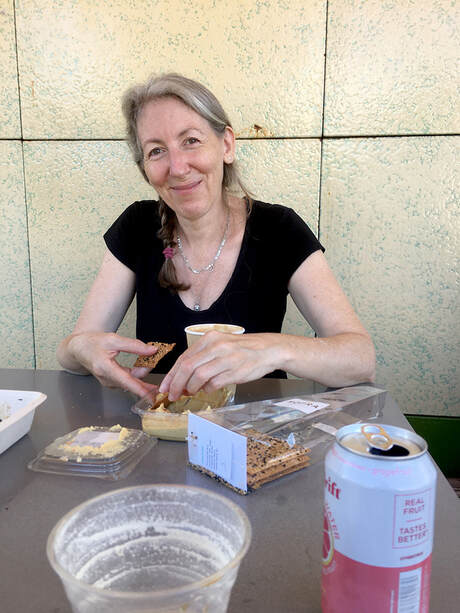
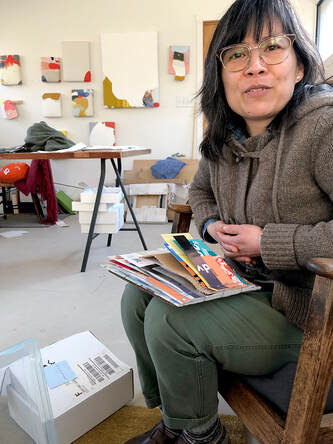
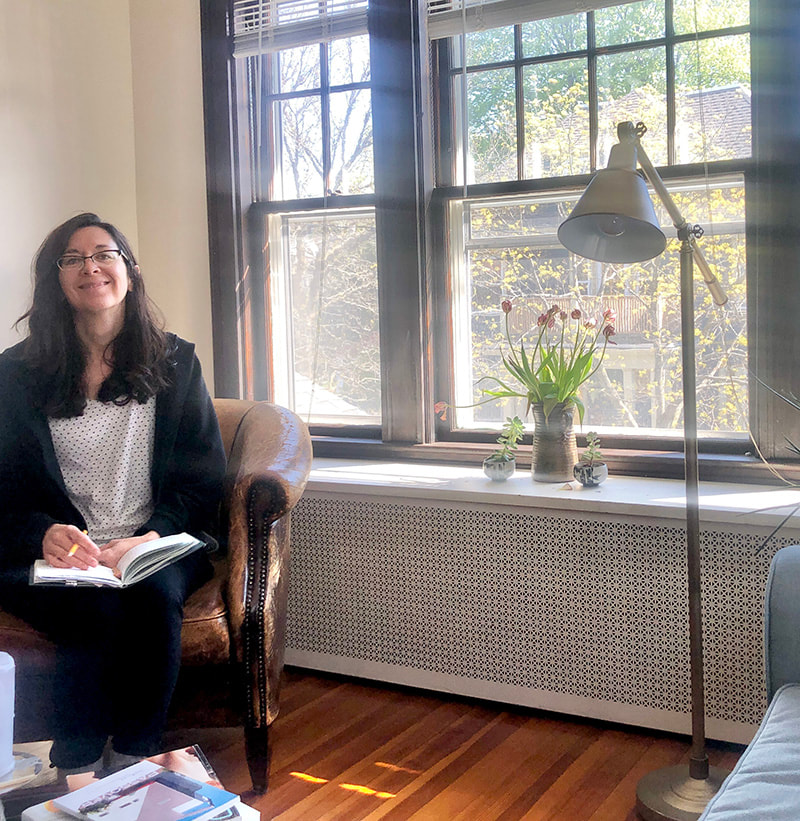
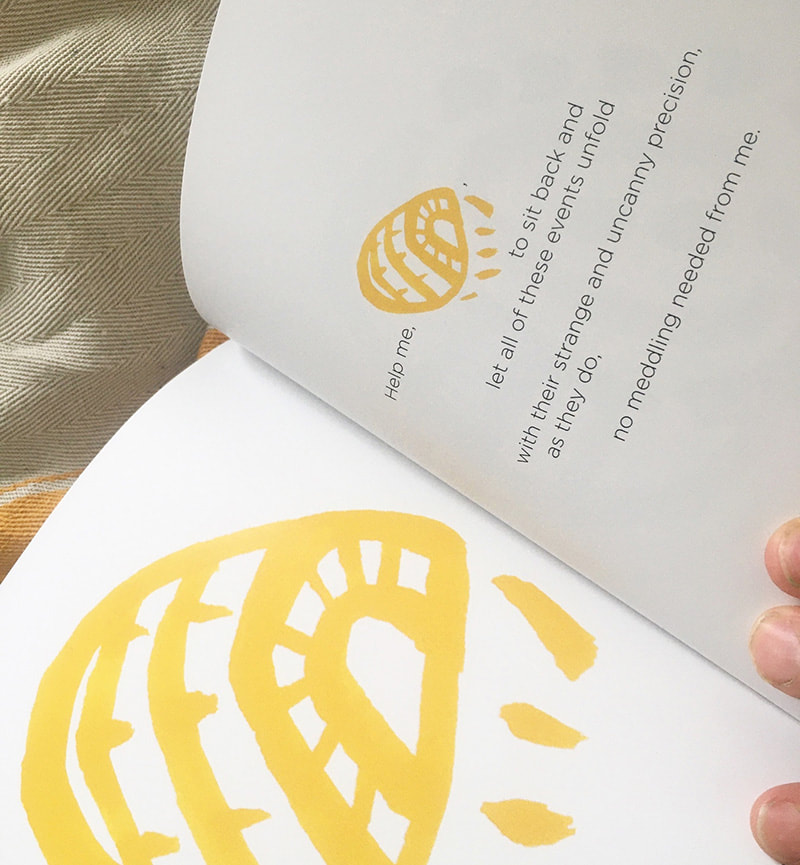
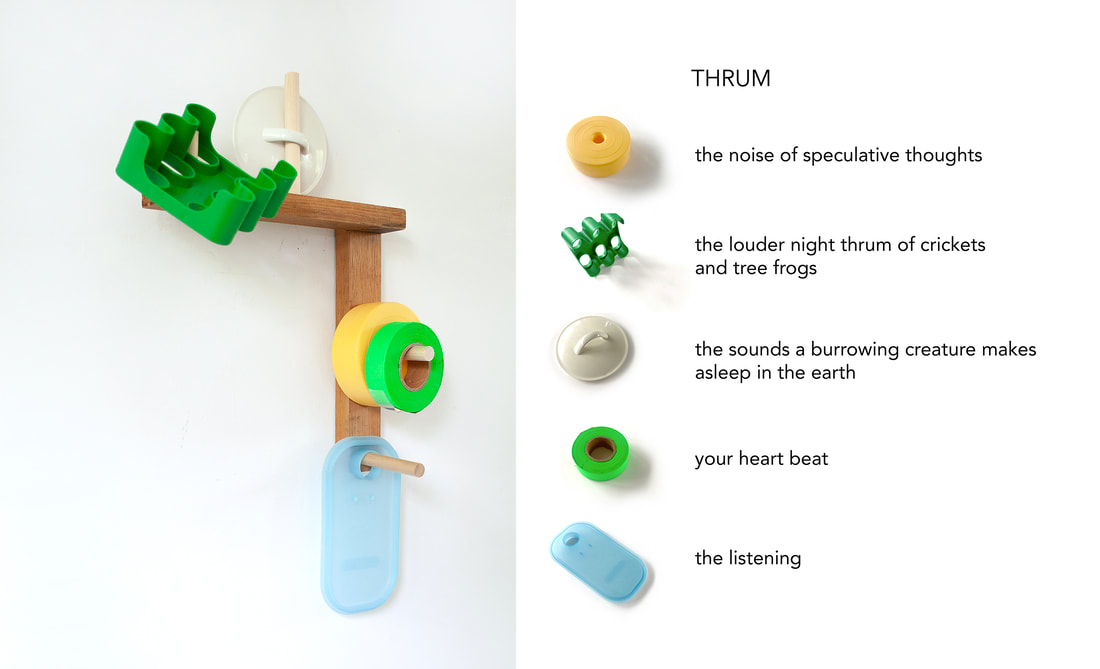
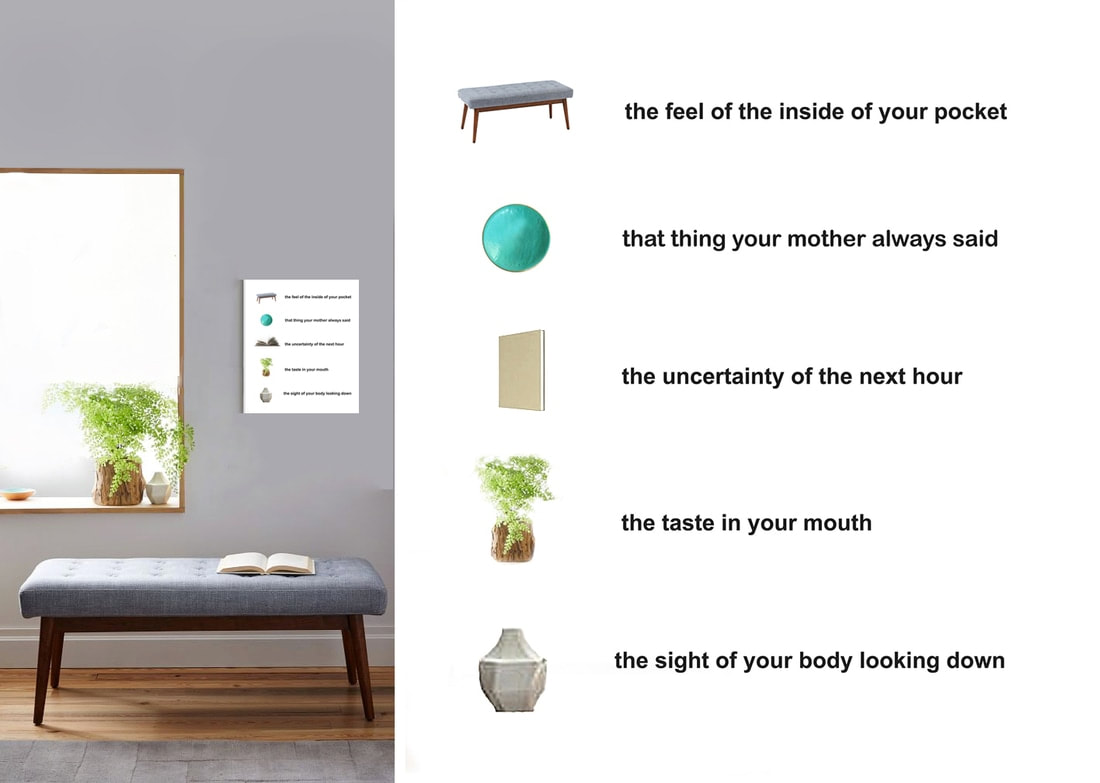
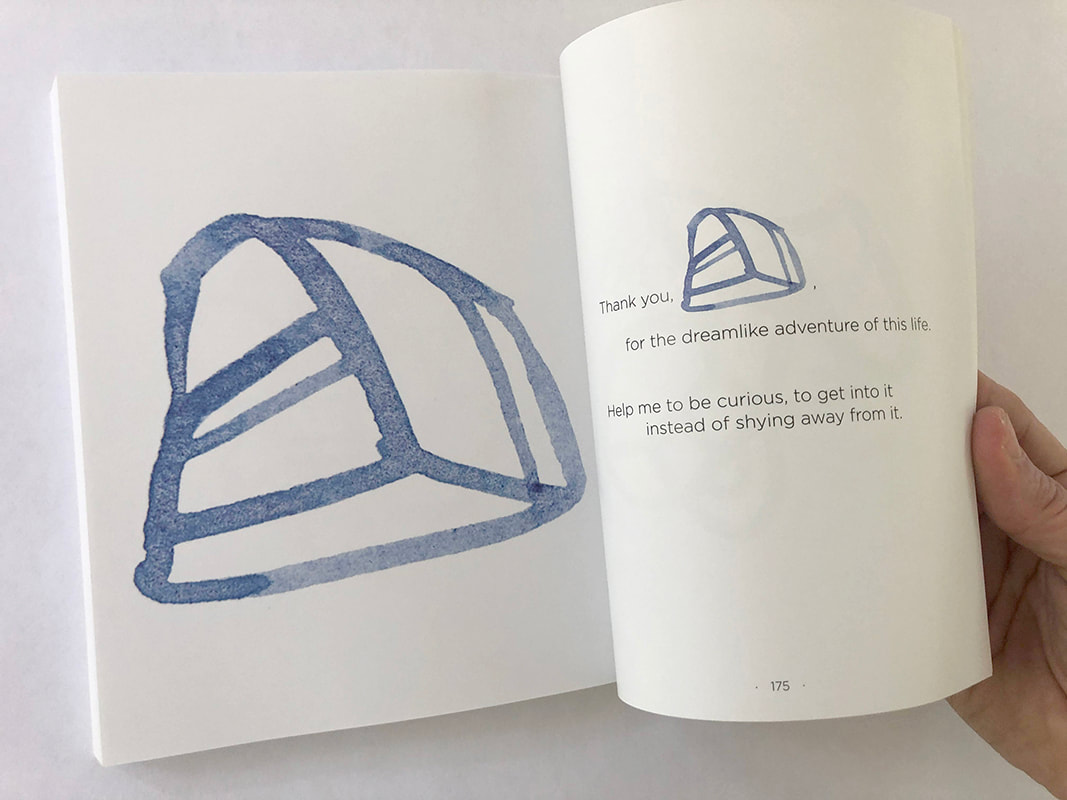
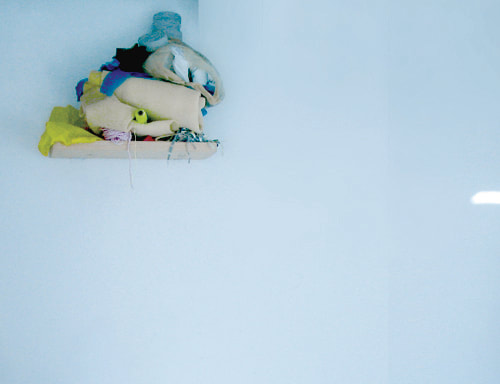
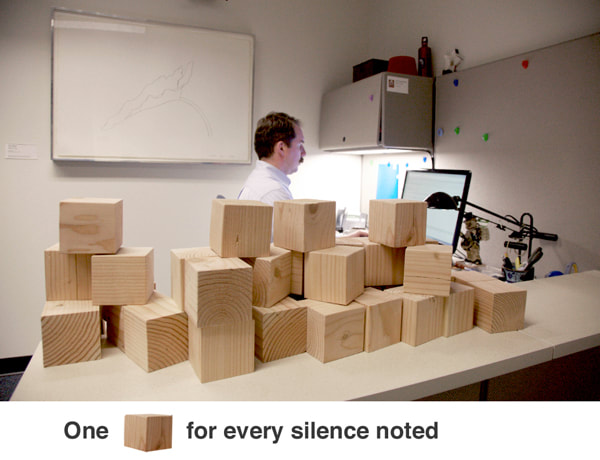
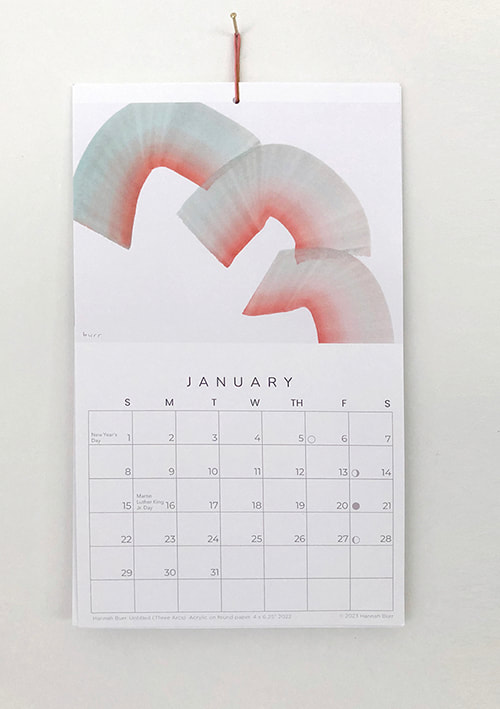
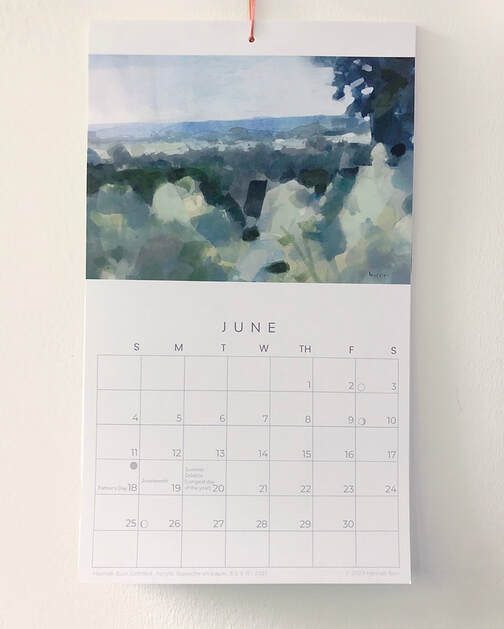
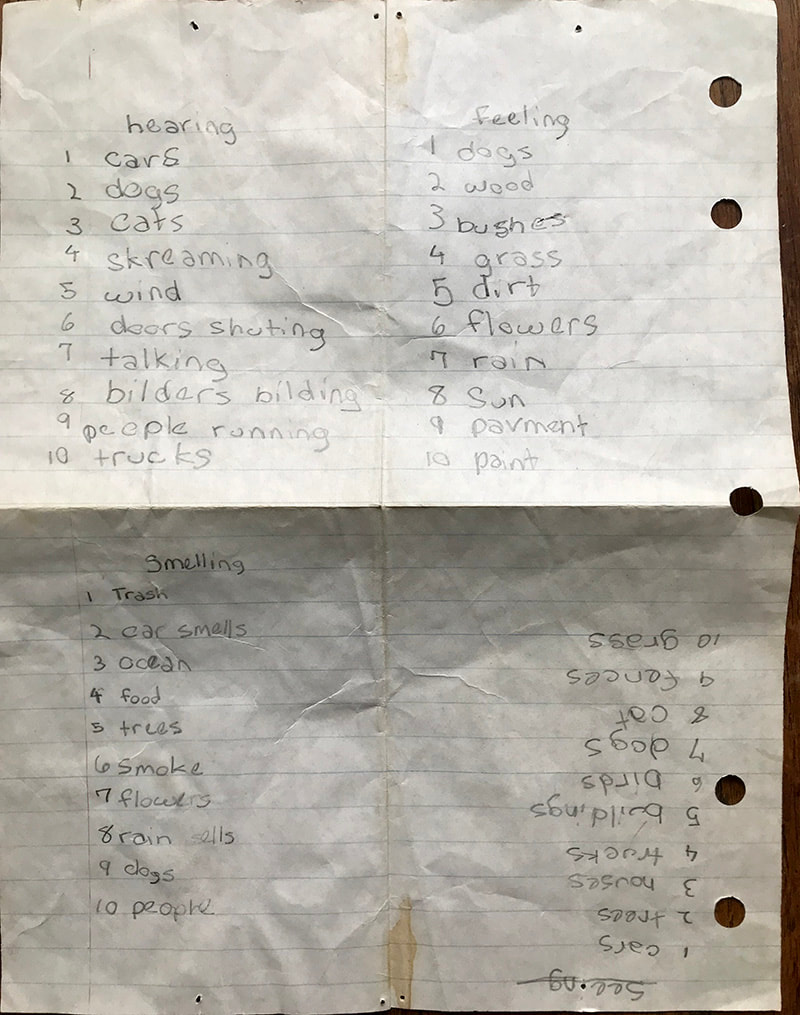
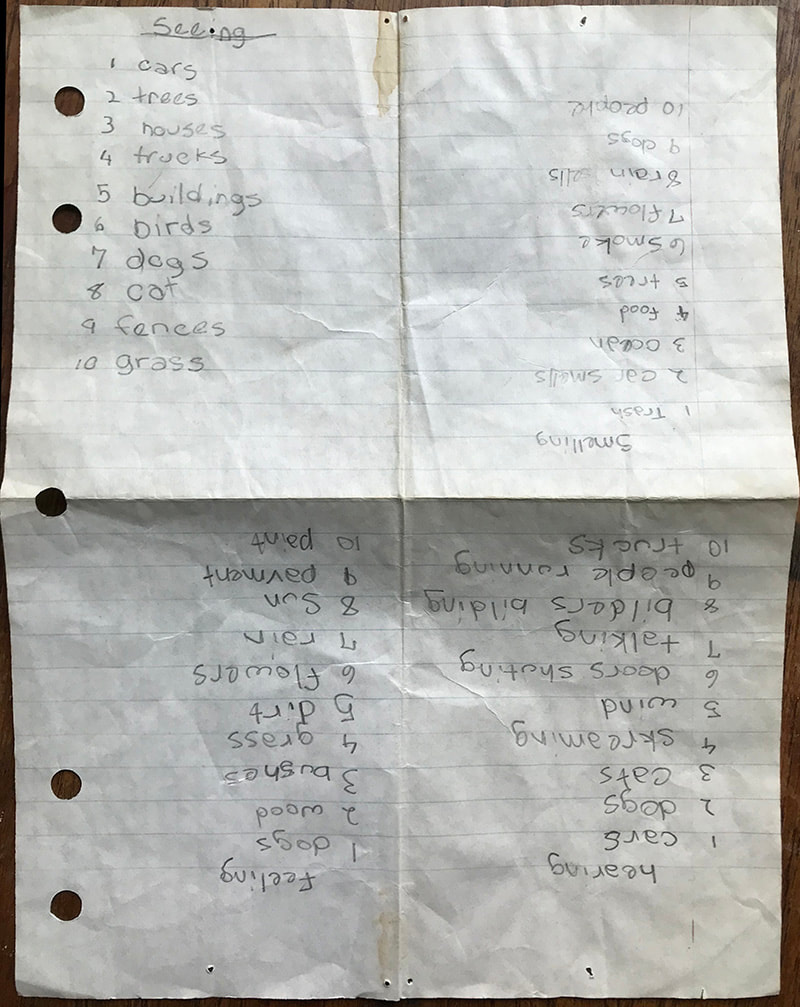
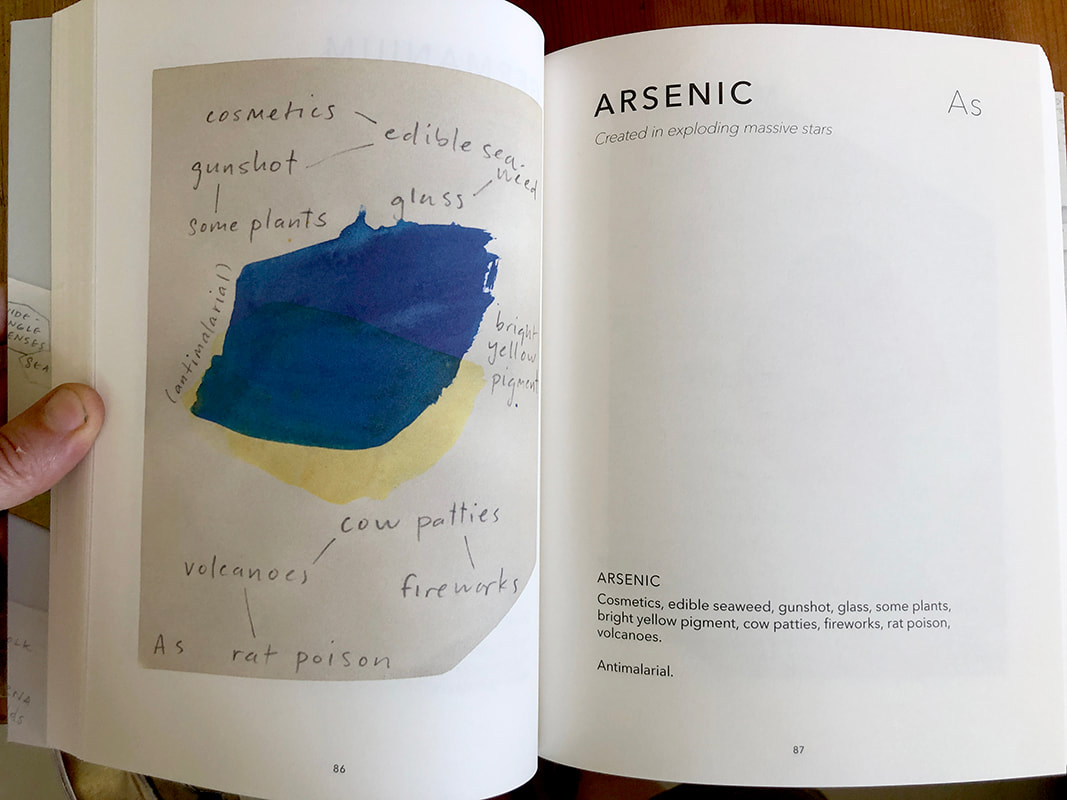
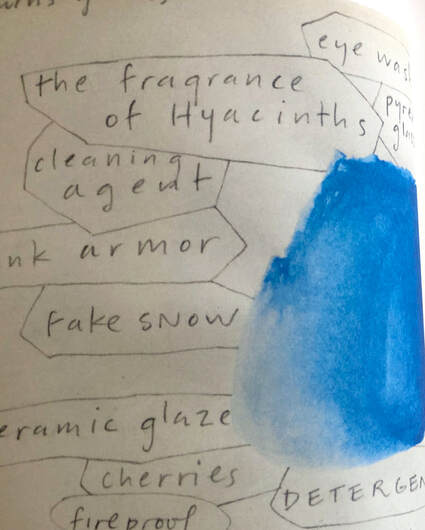
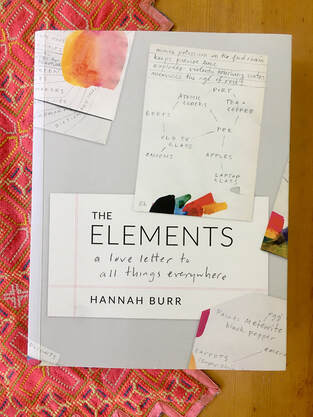
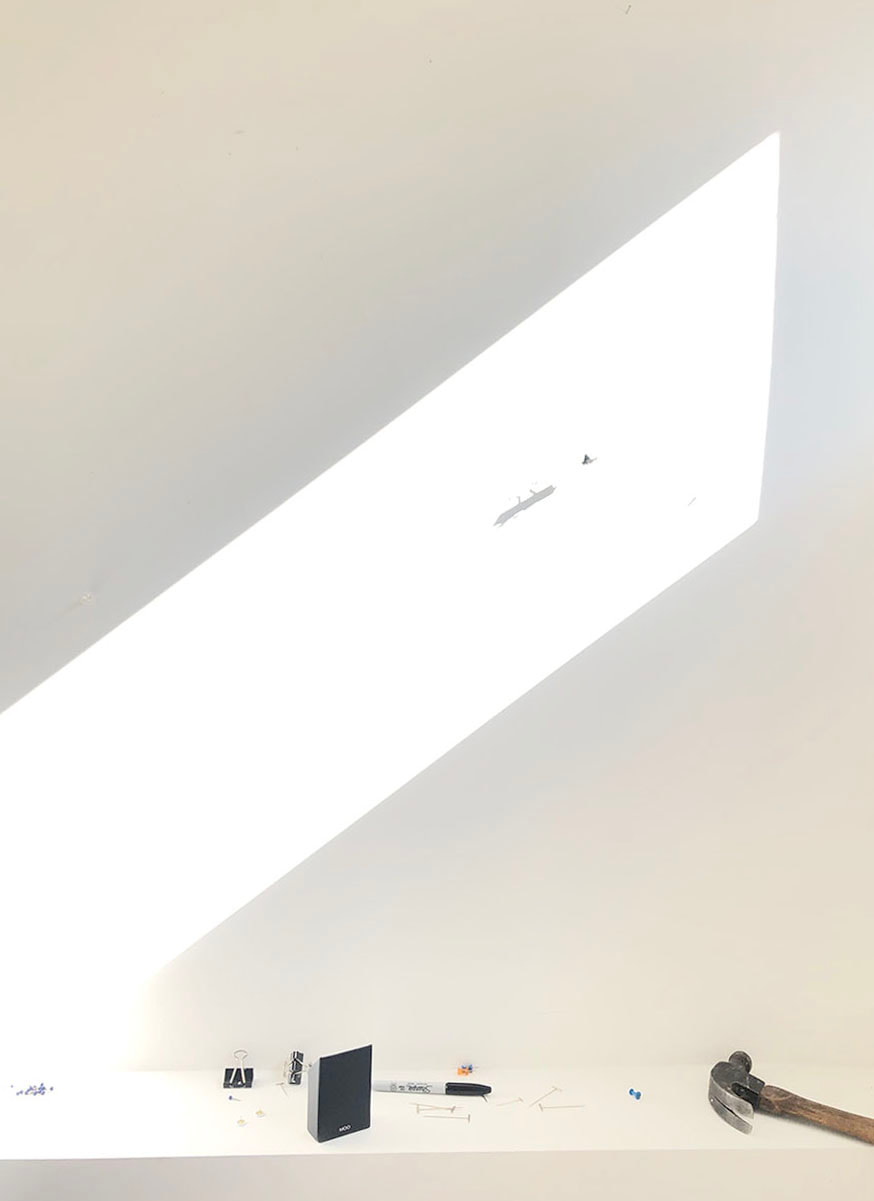
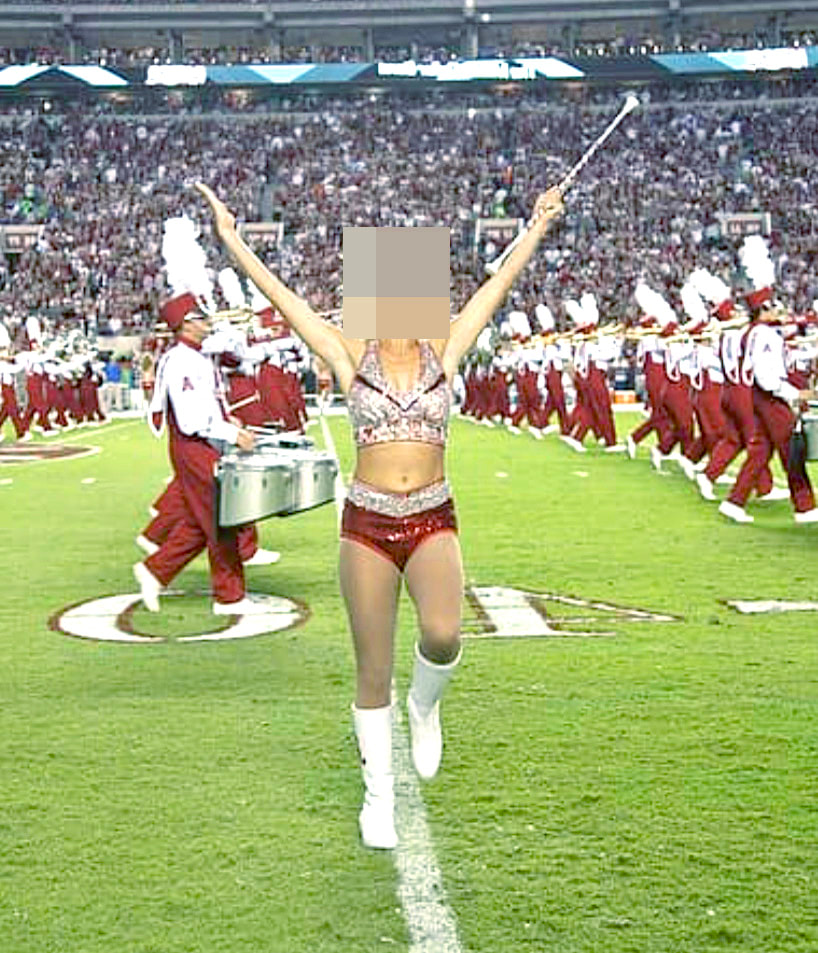
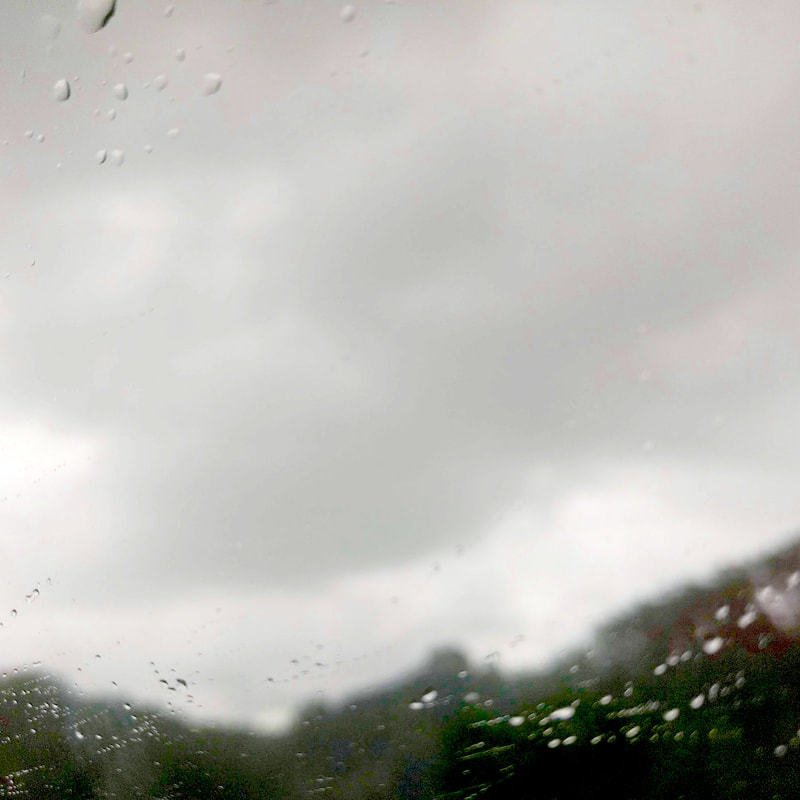
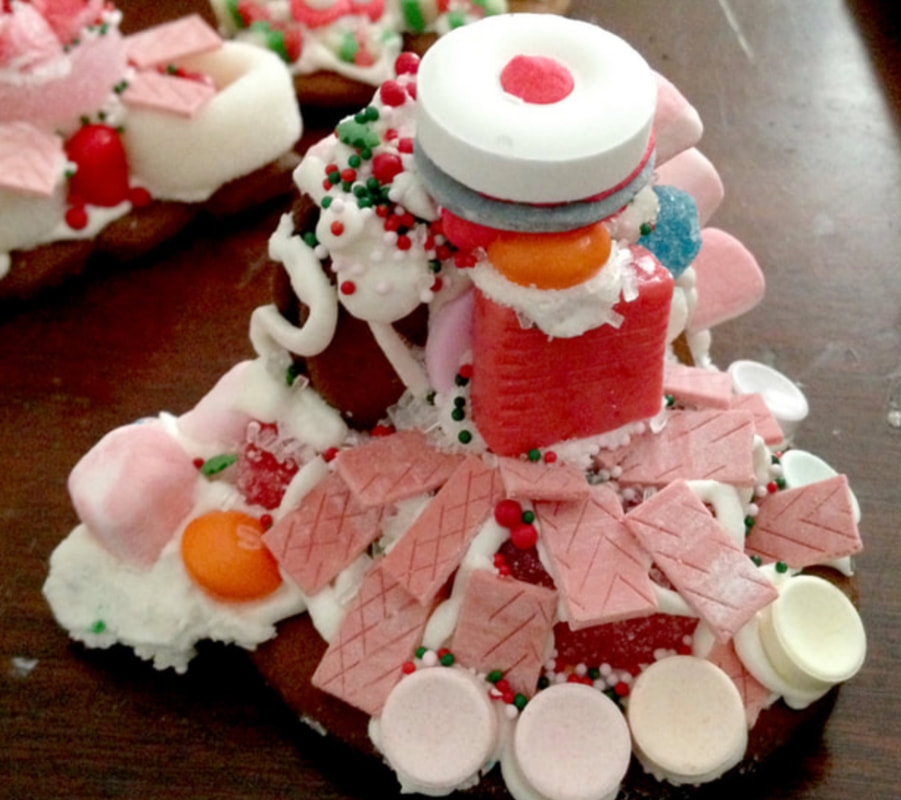
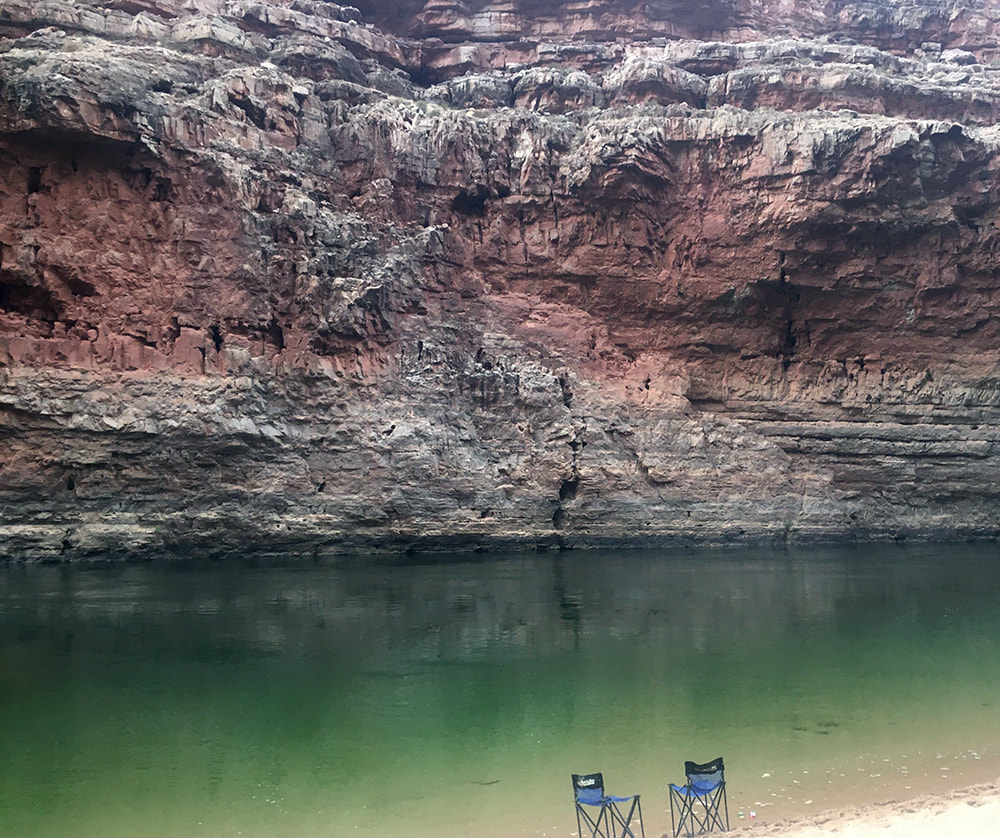
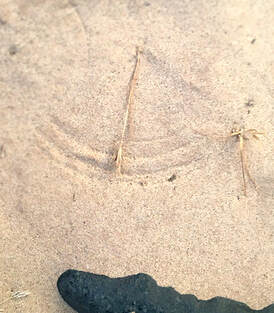
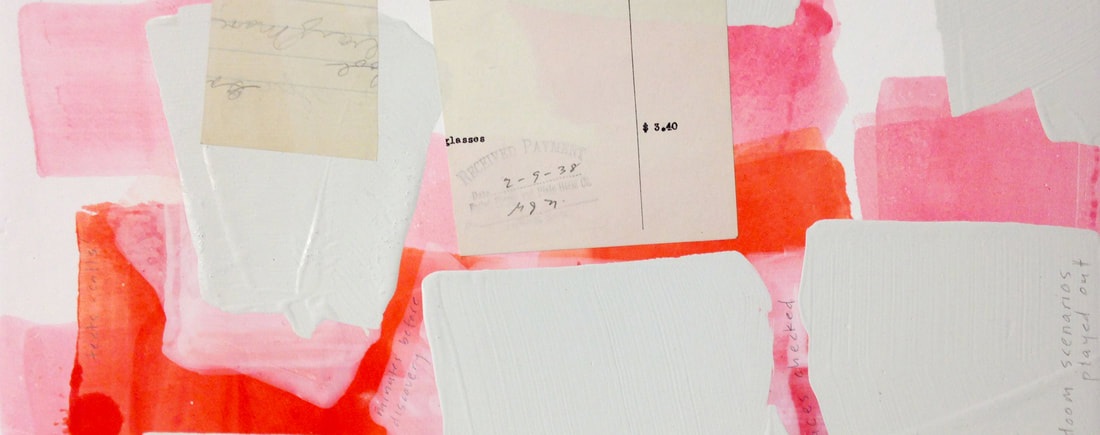
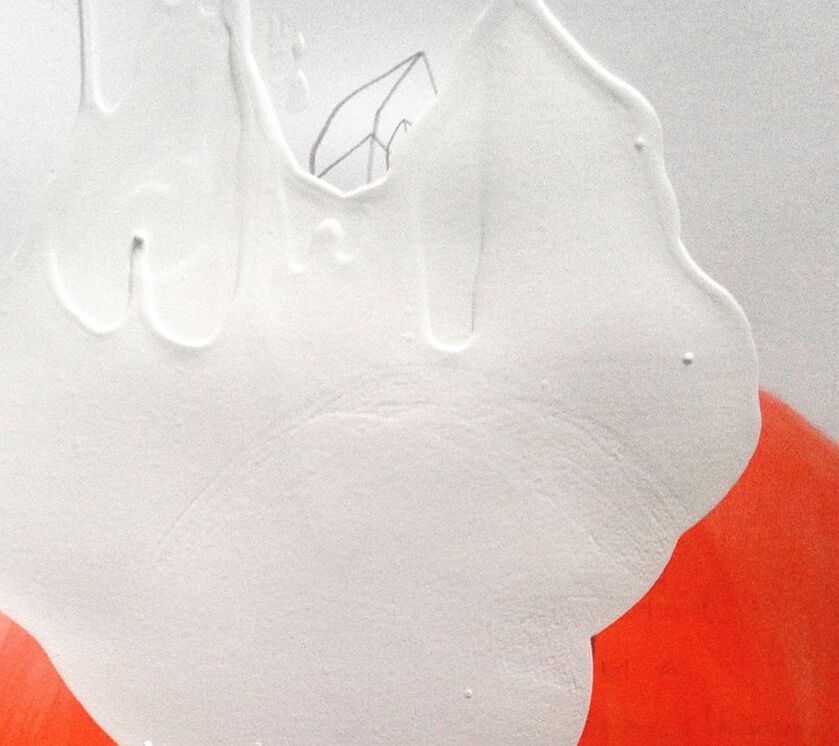
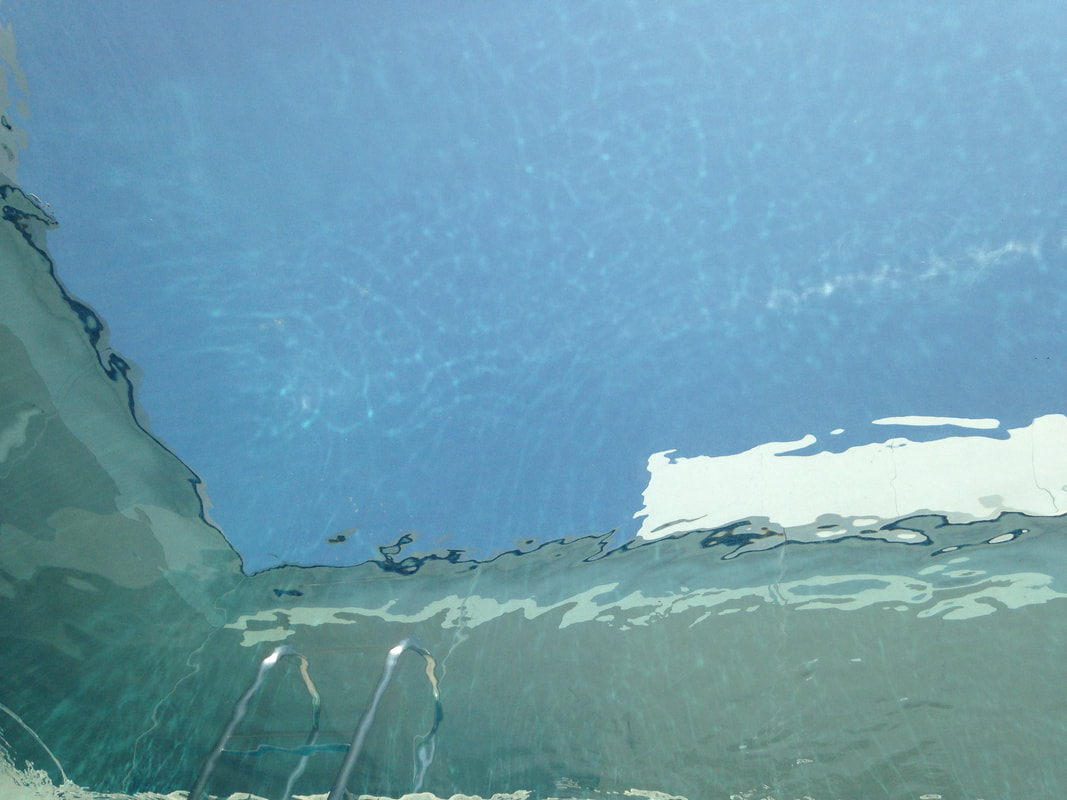
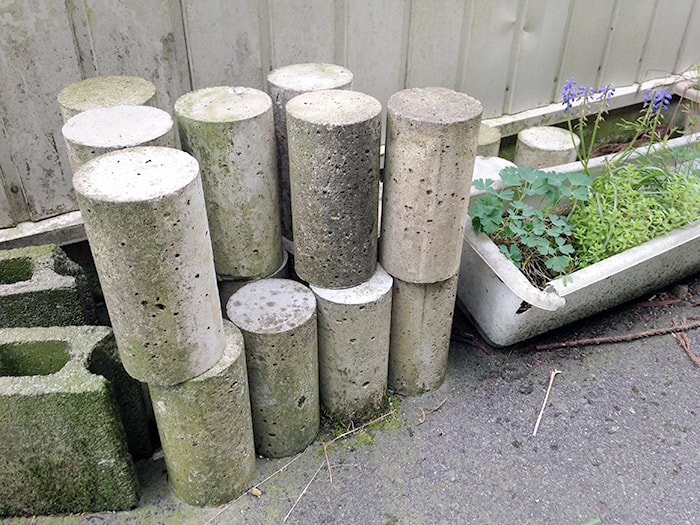
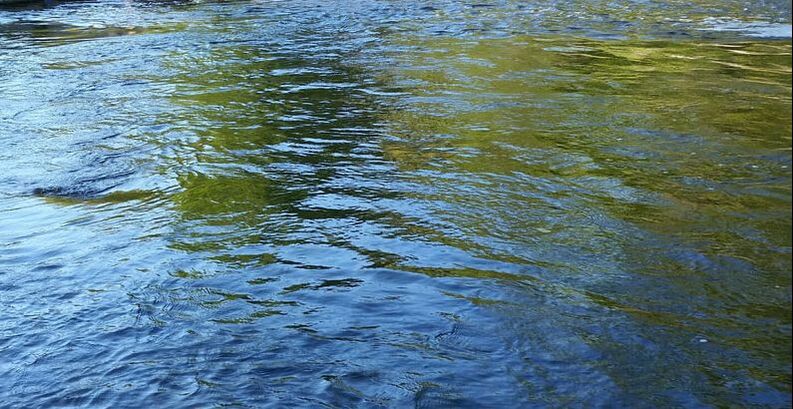
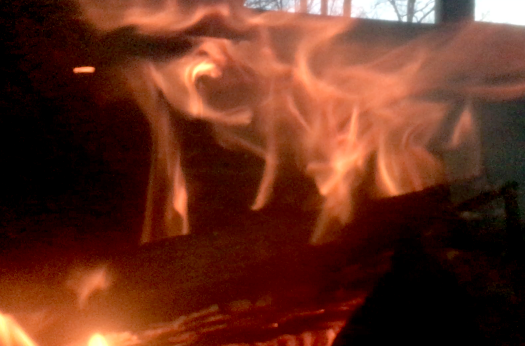
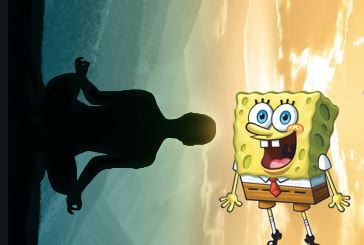
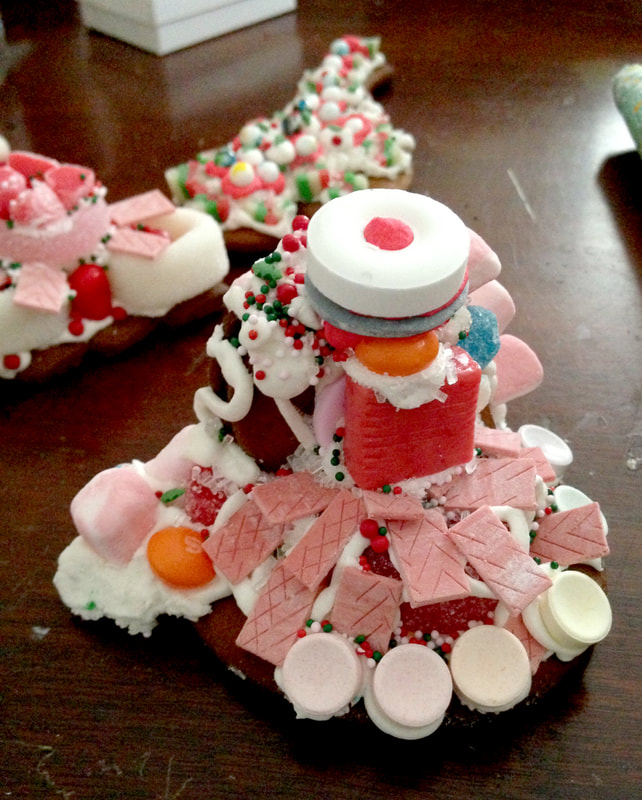
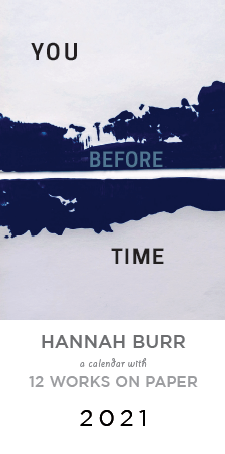
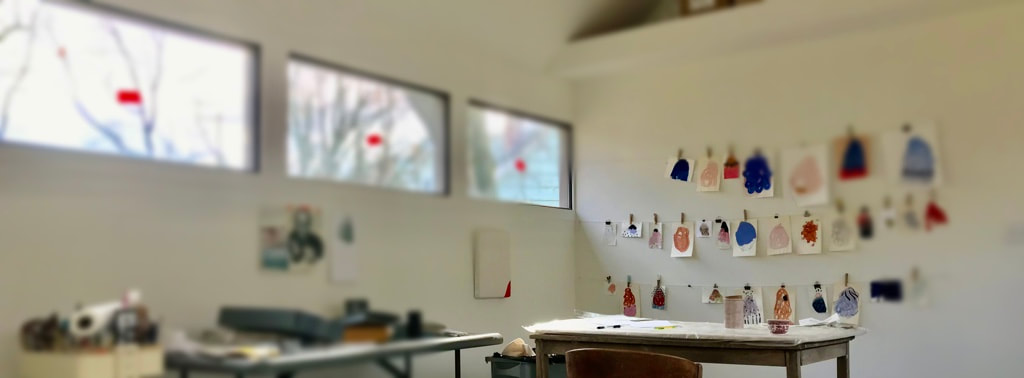
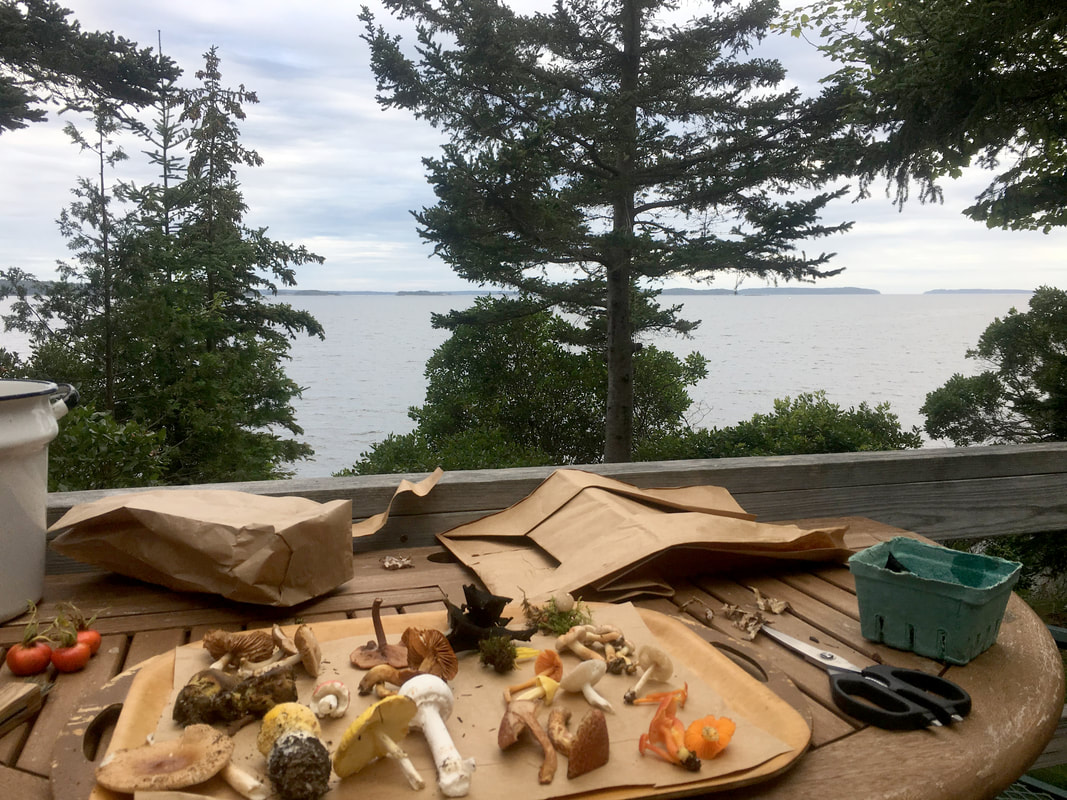
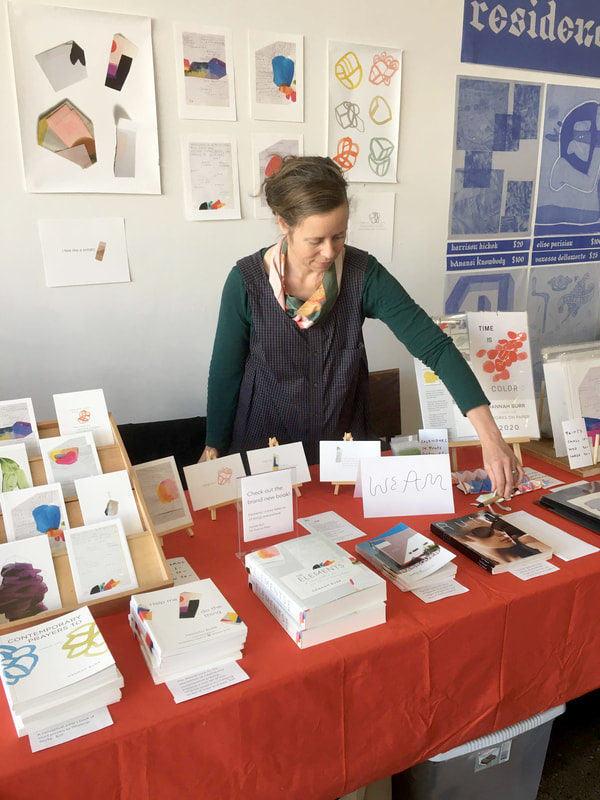
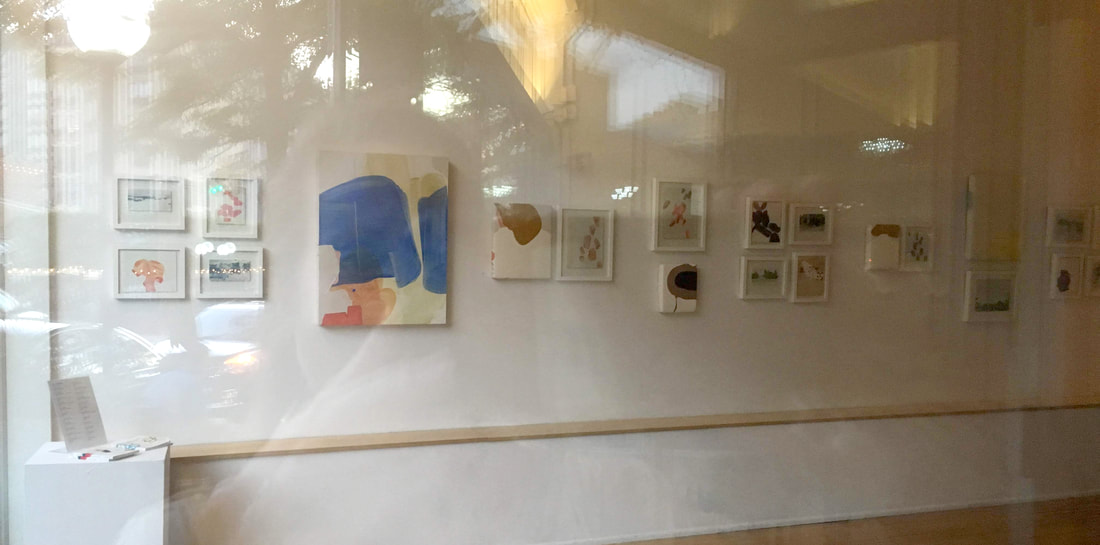
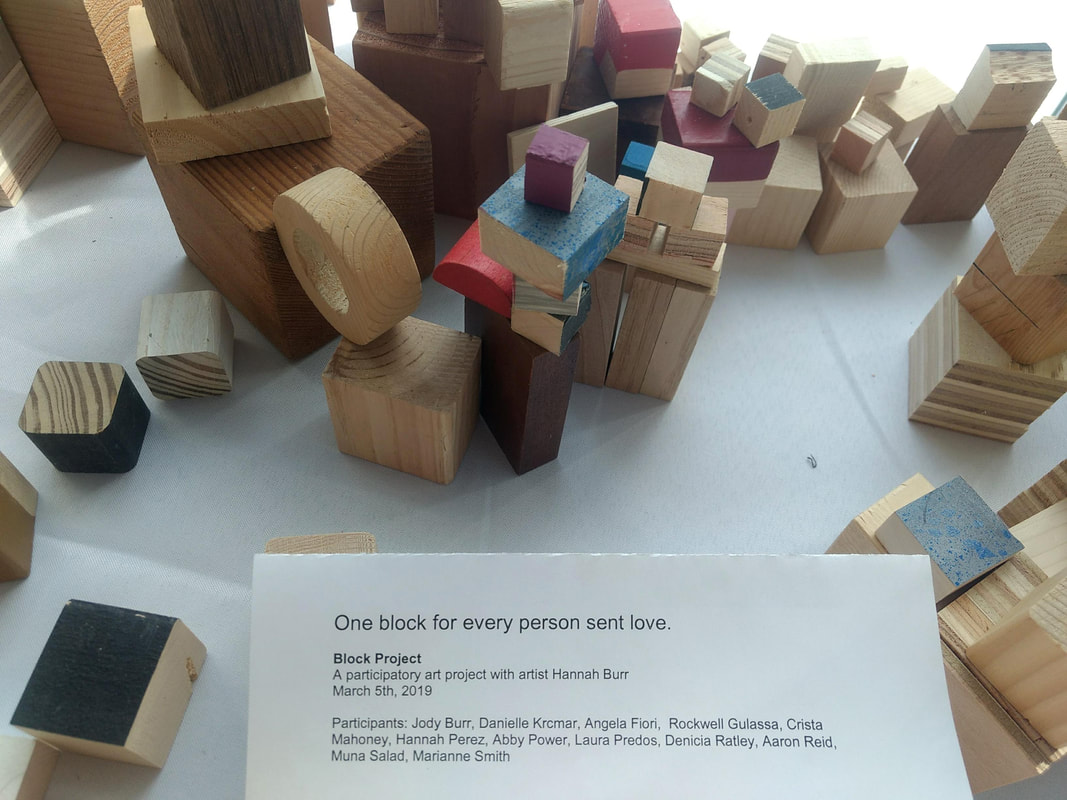
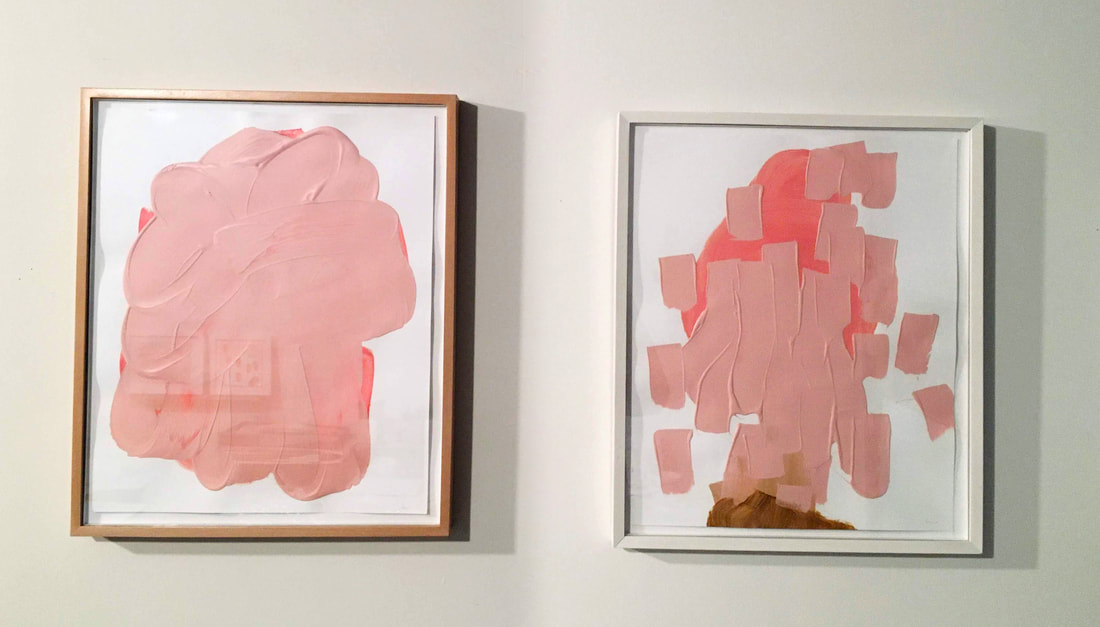
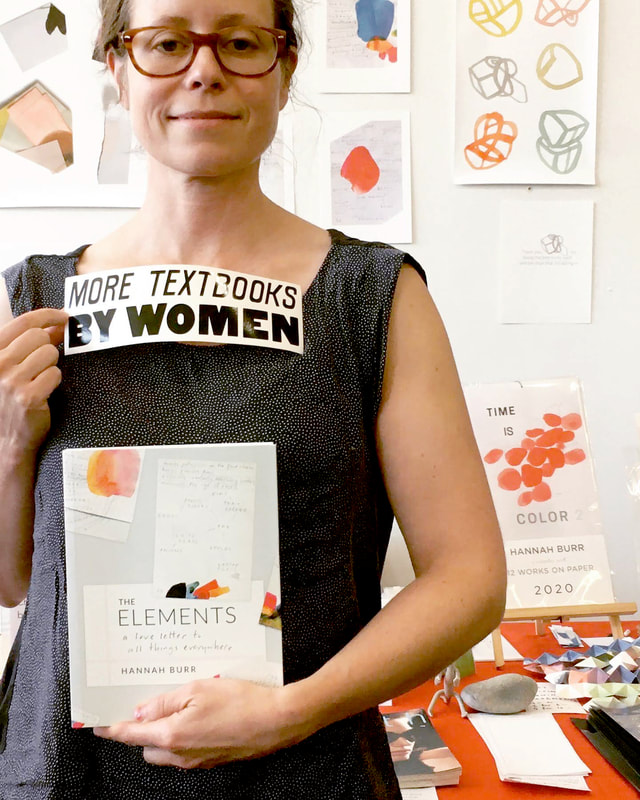
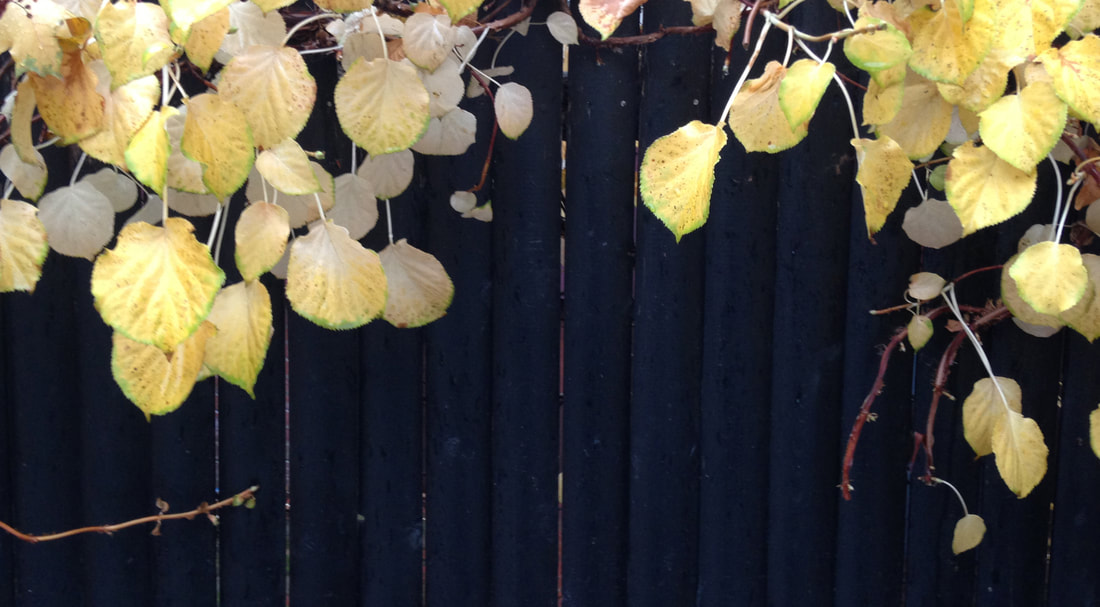
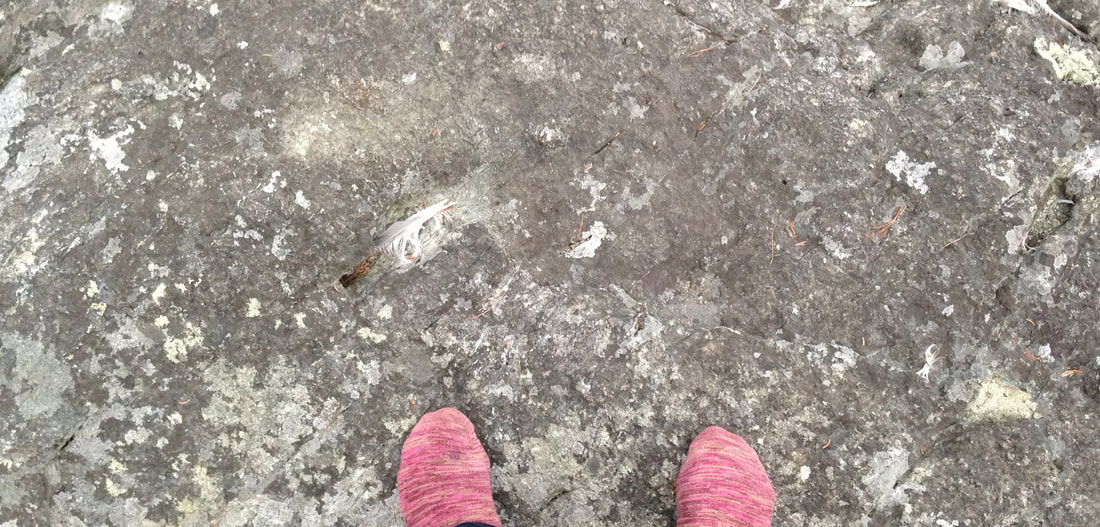
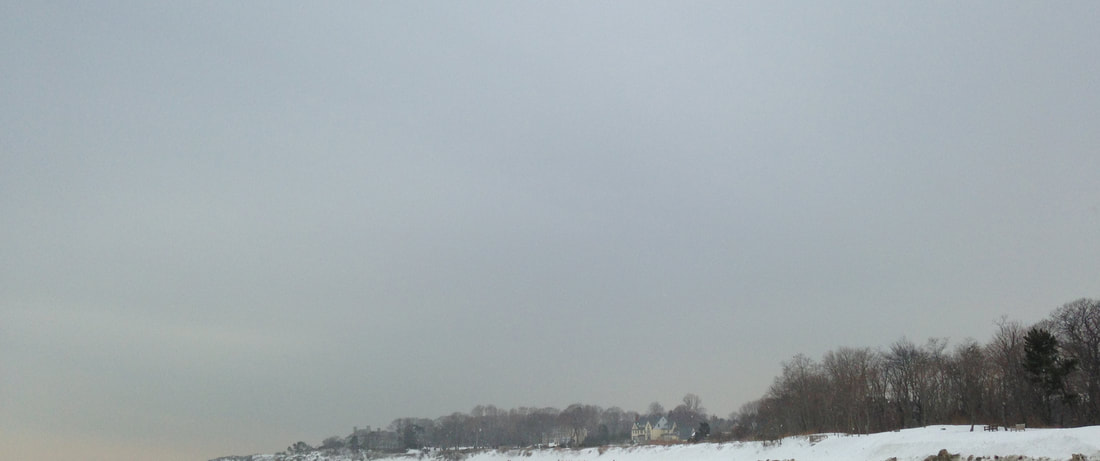
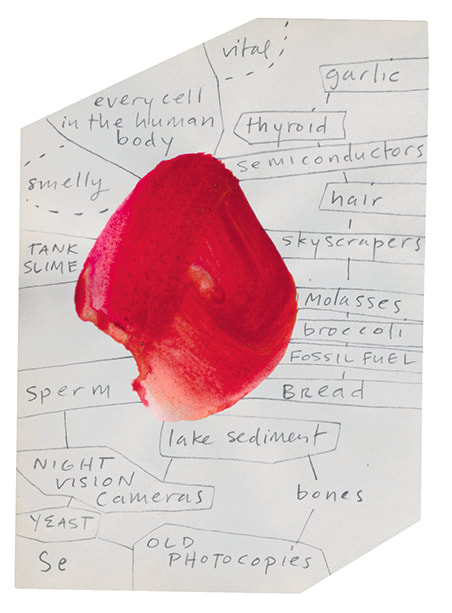
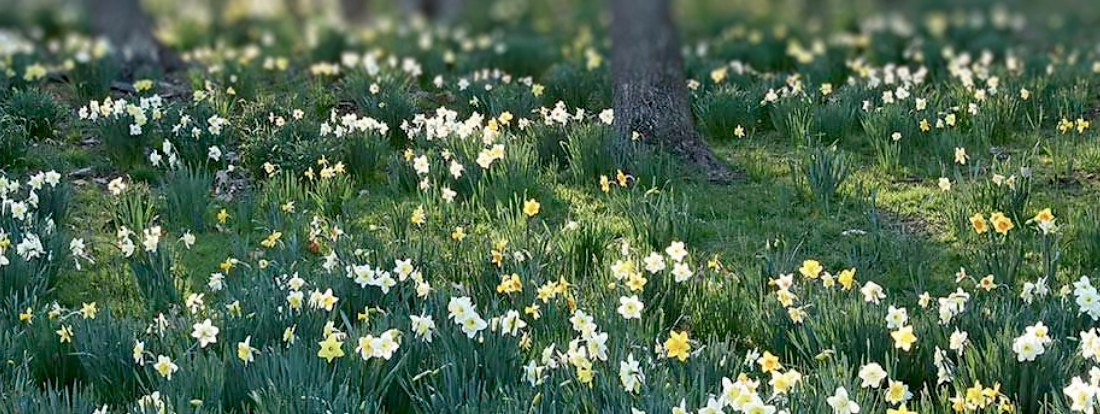
 RSS Feed
RSS Feed